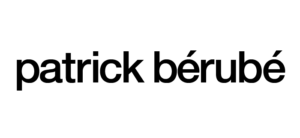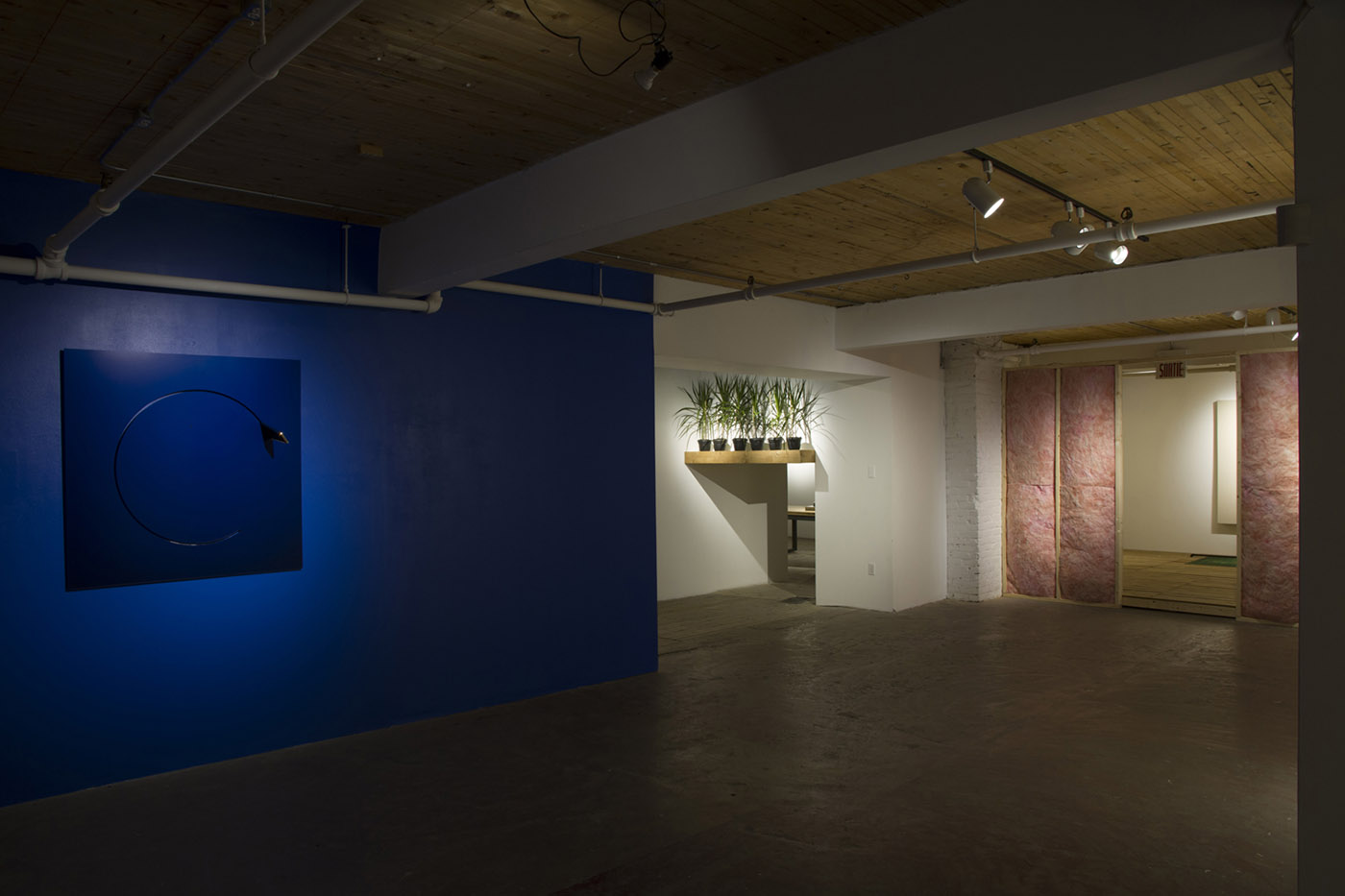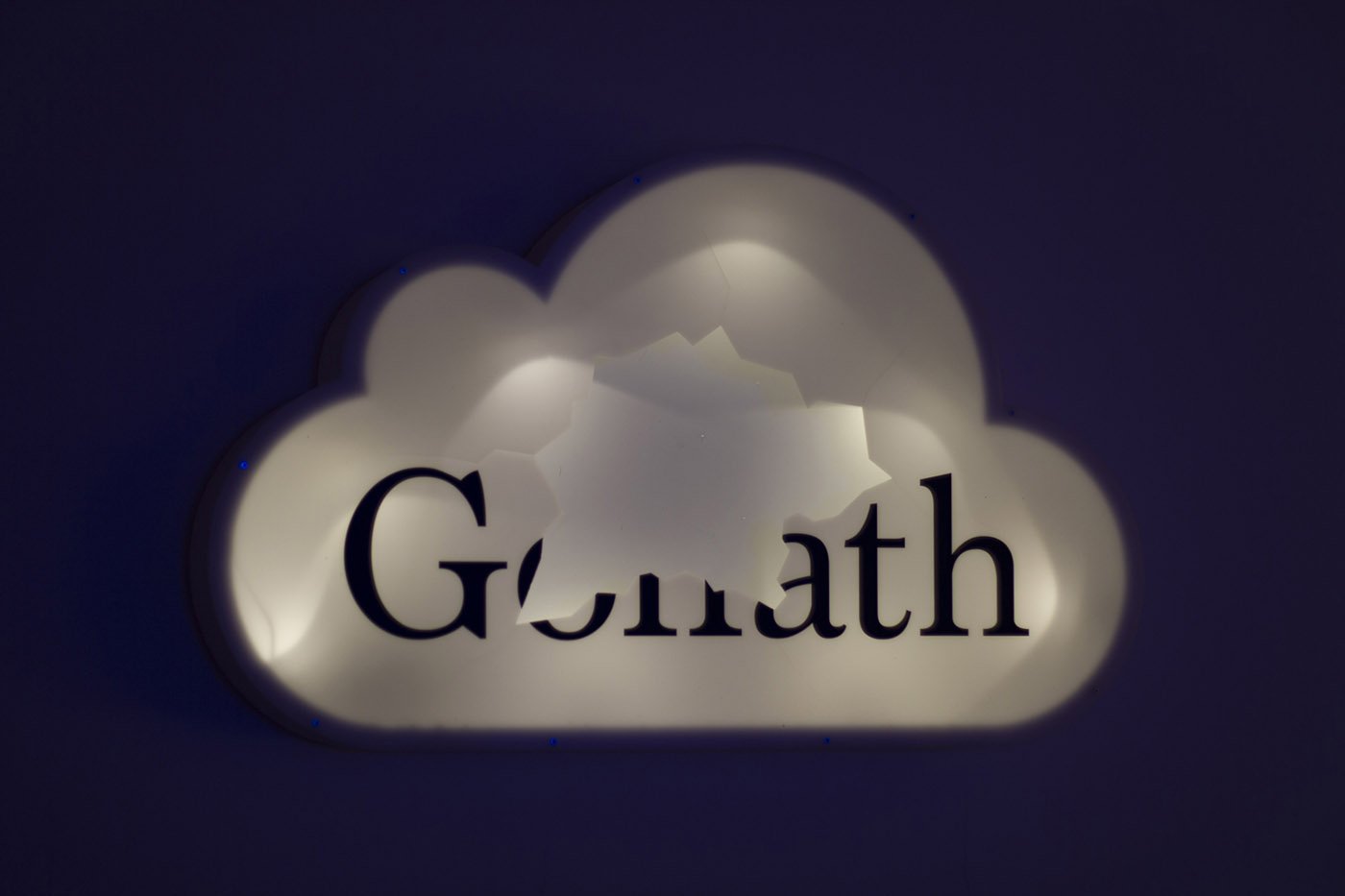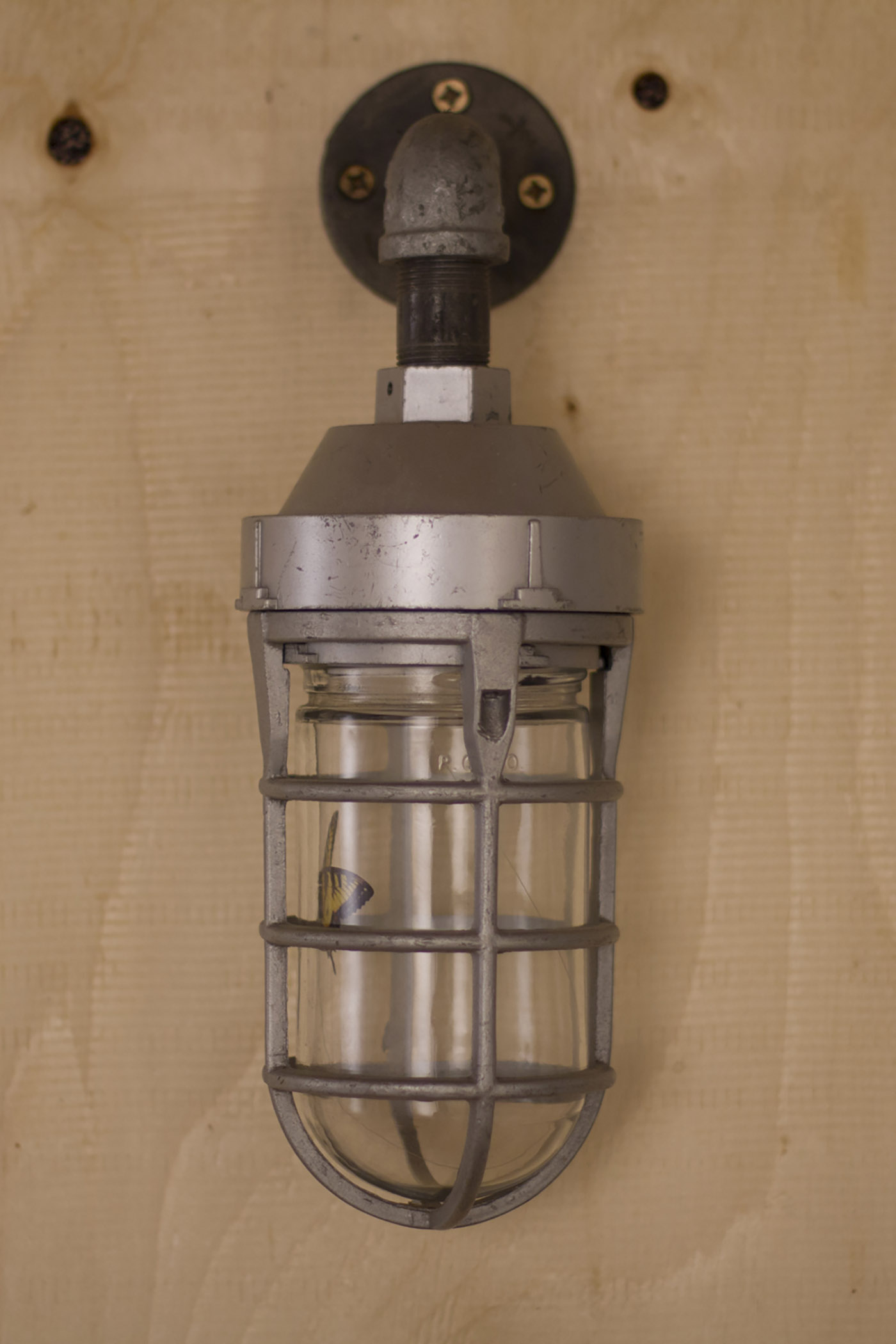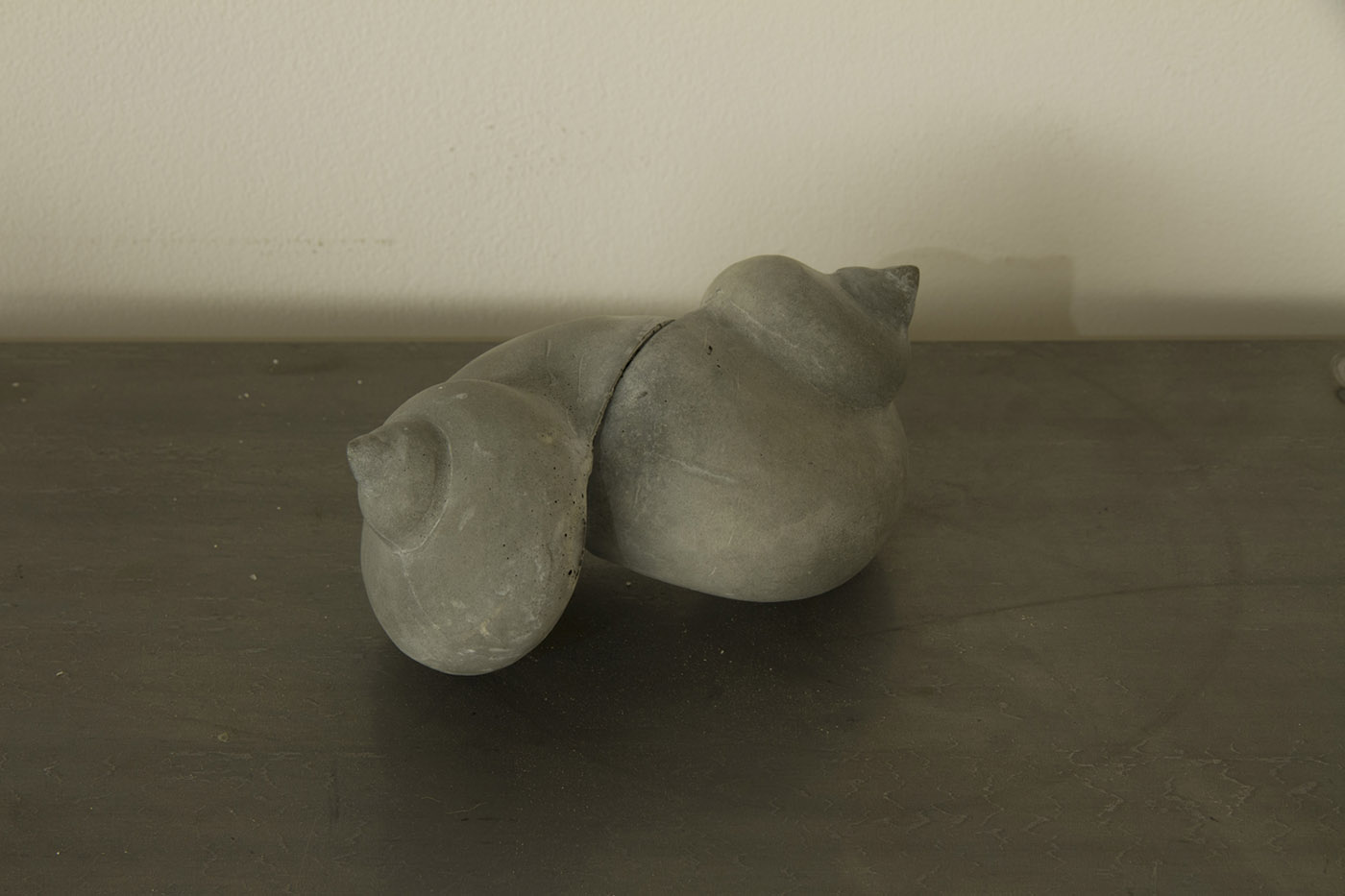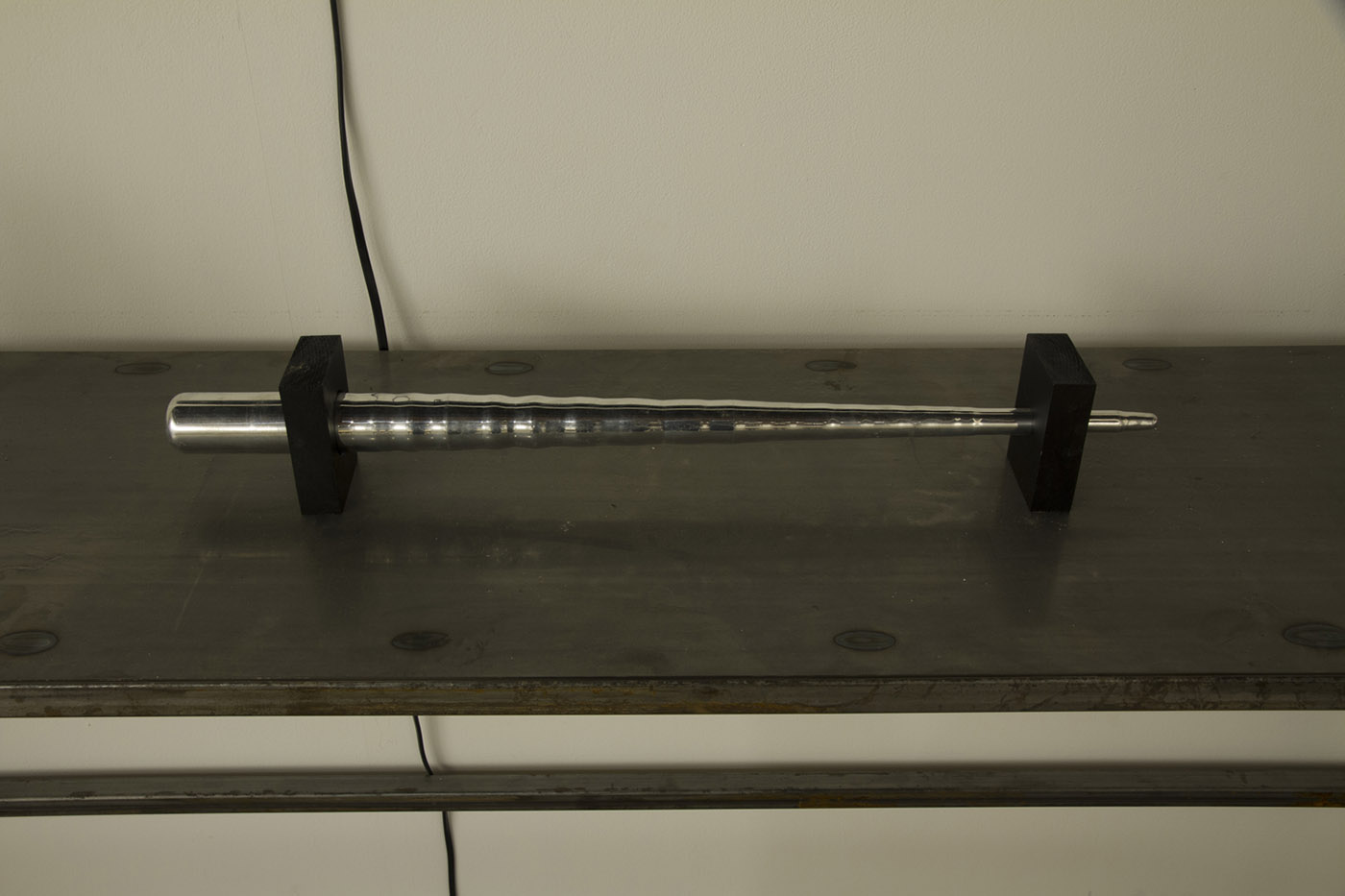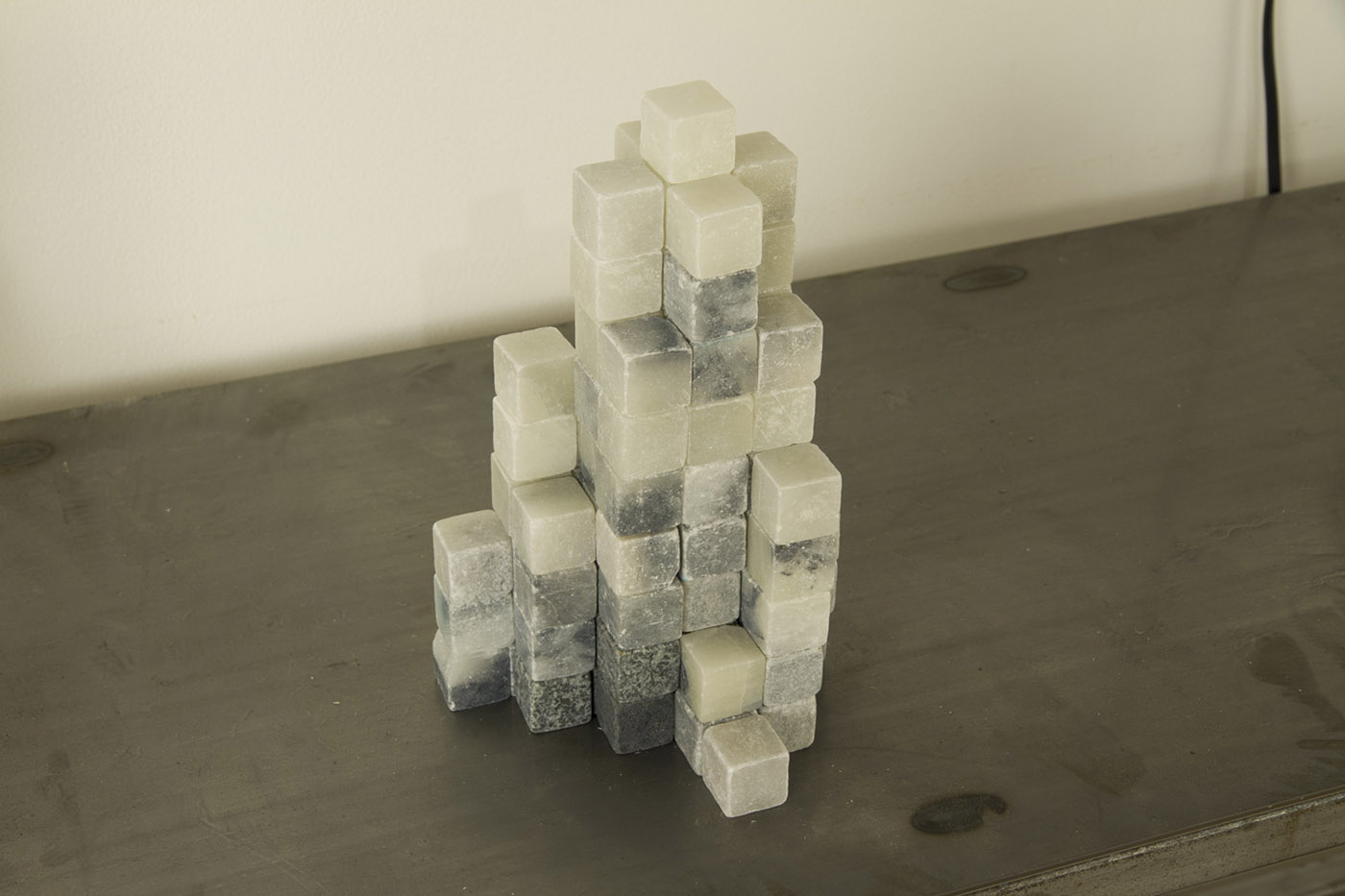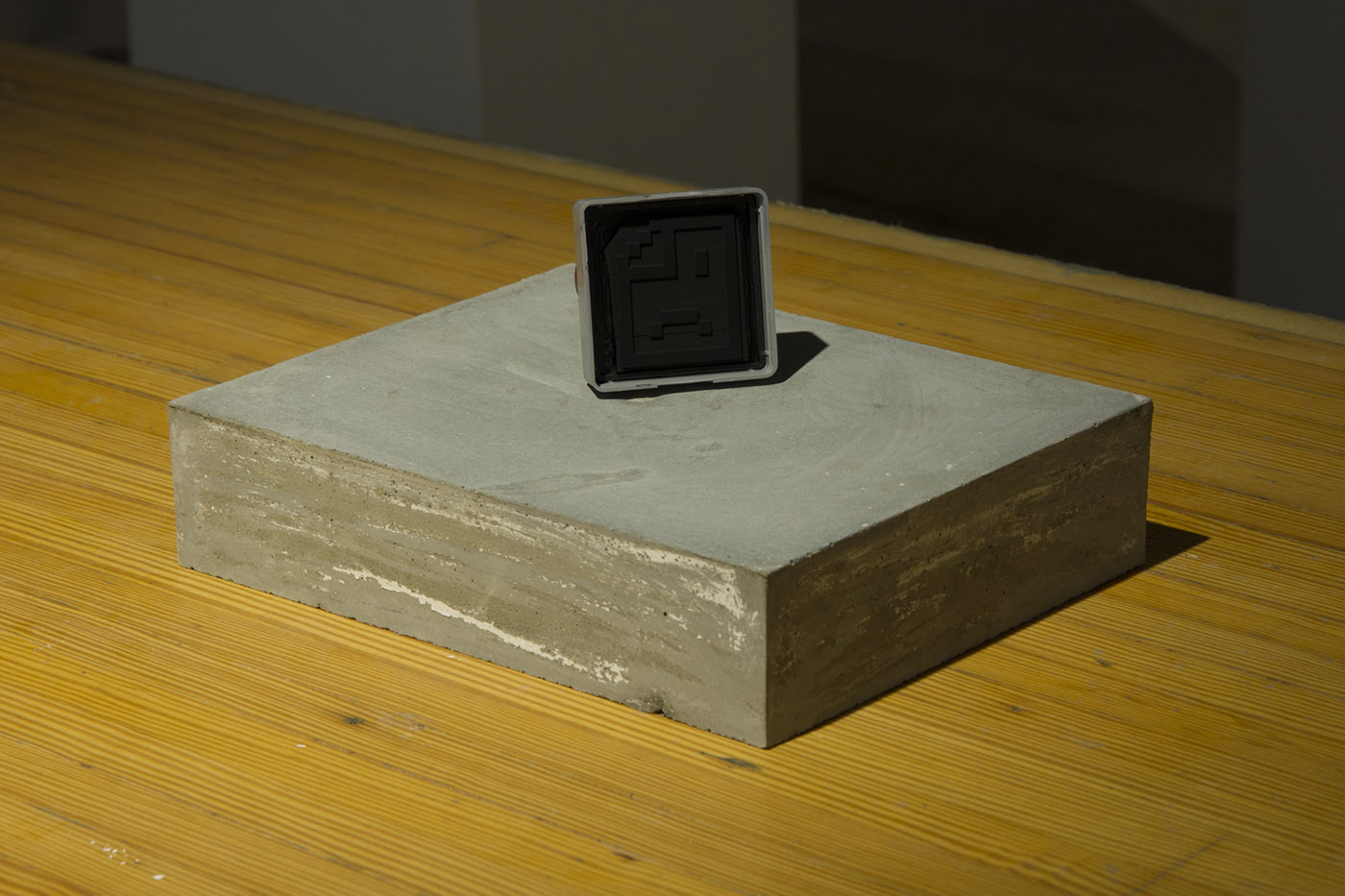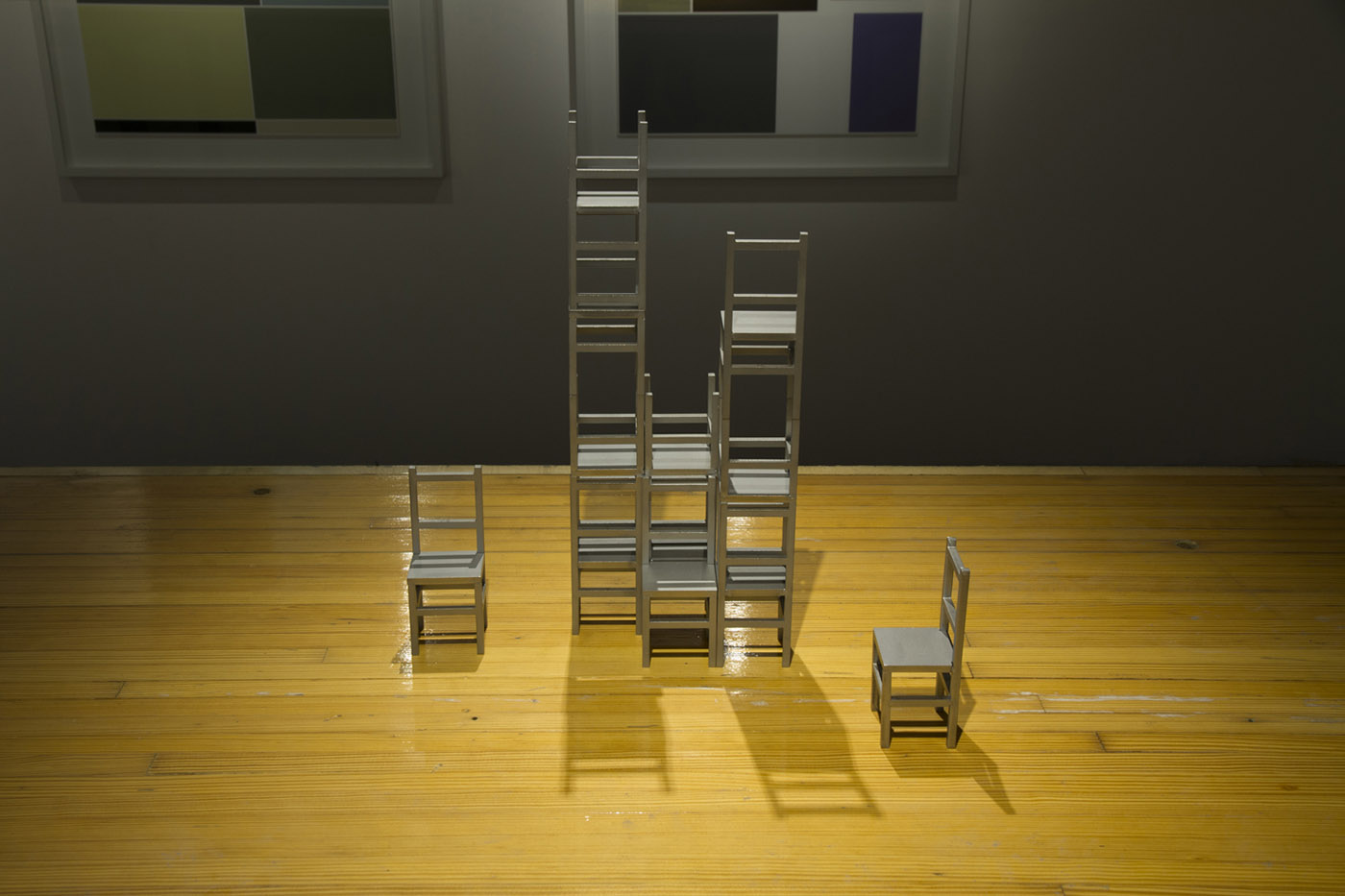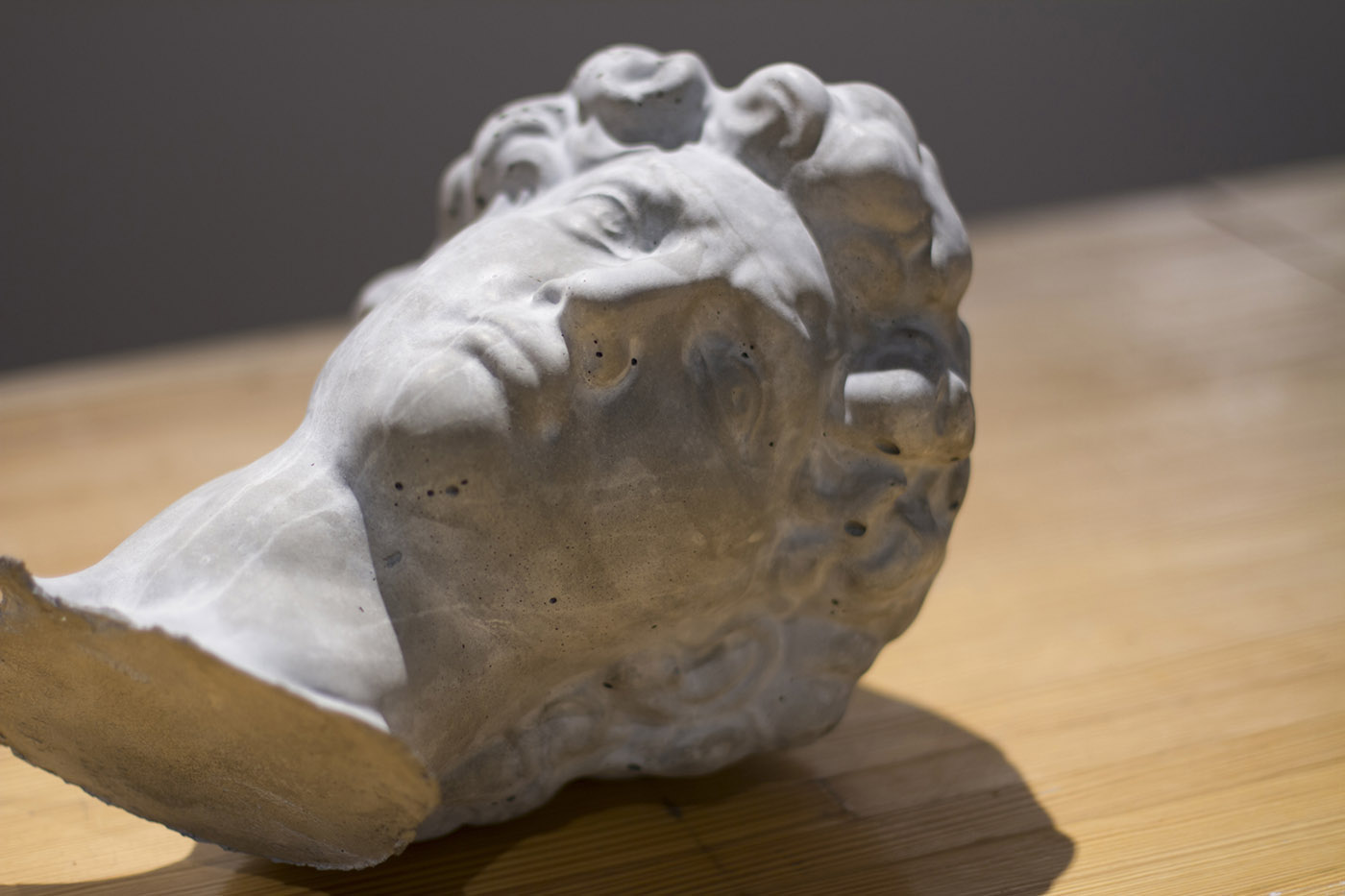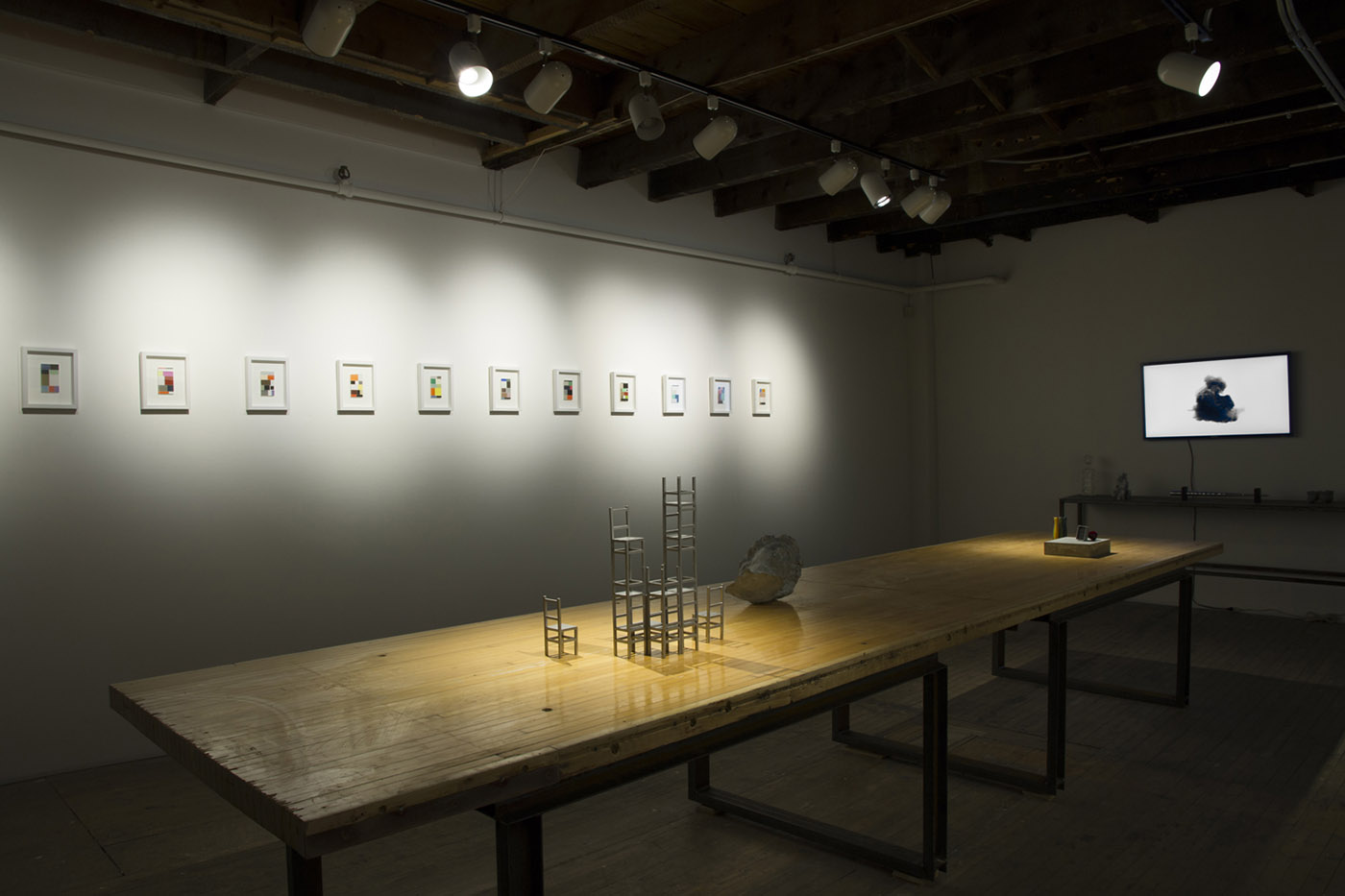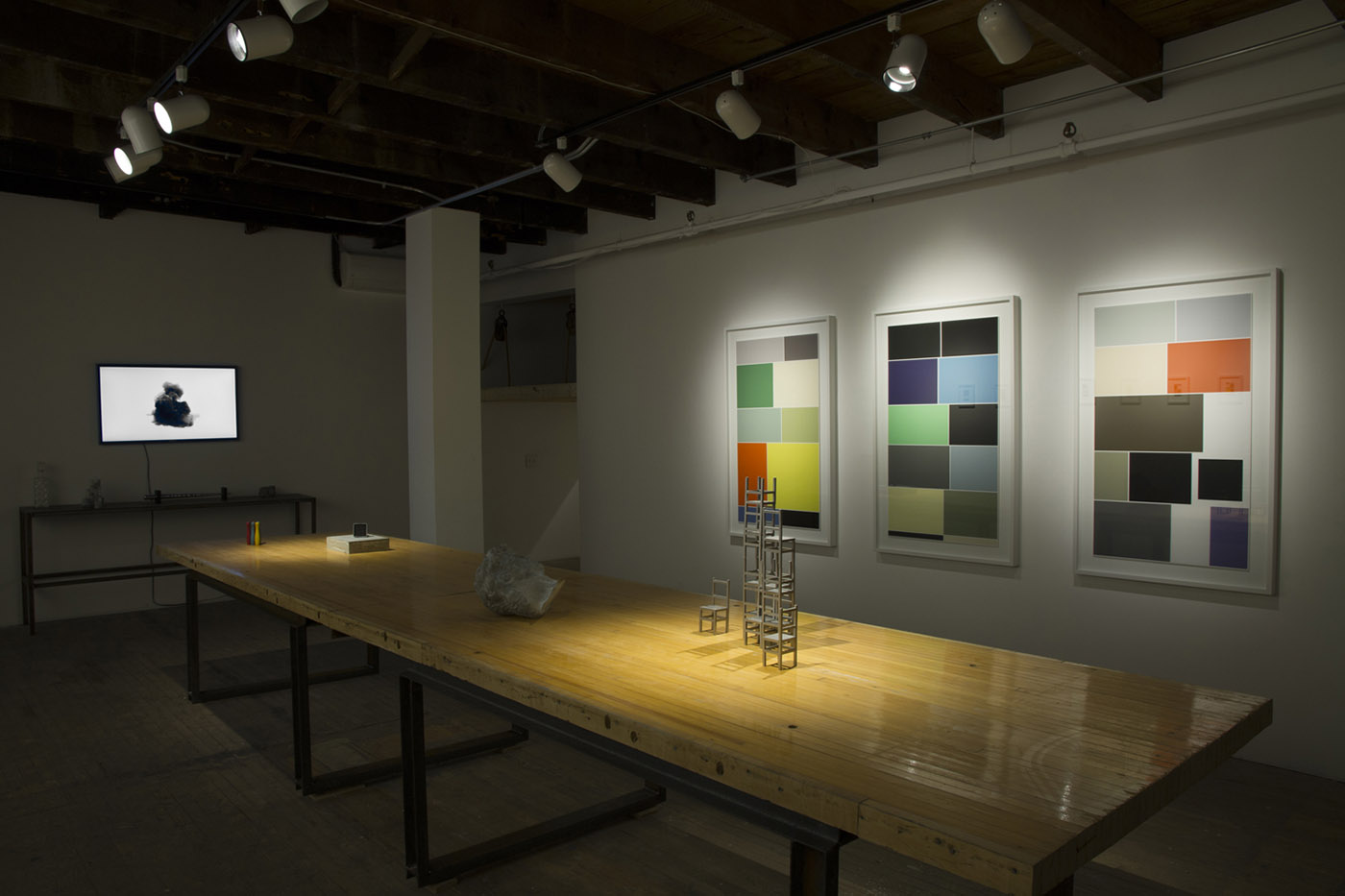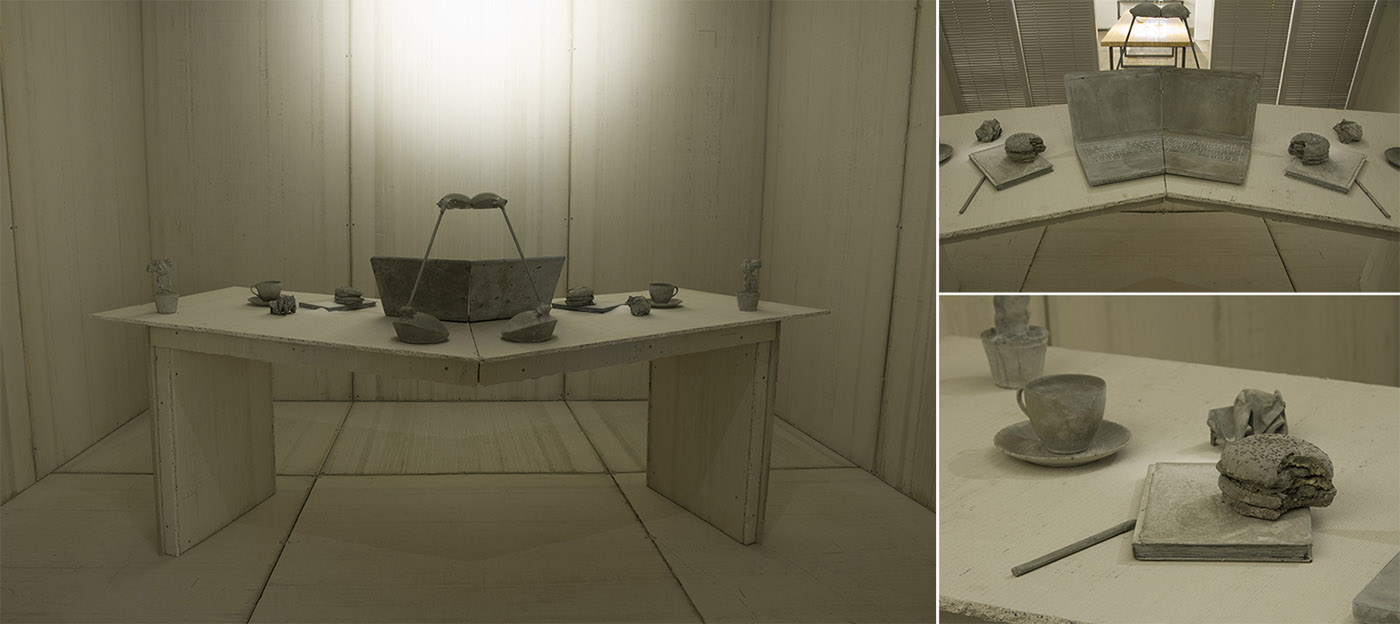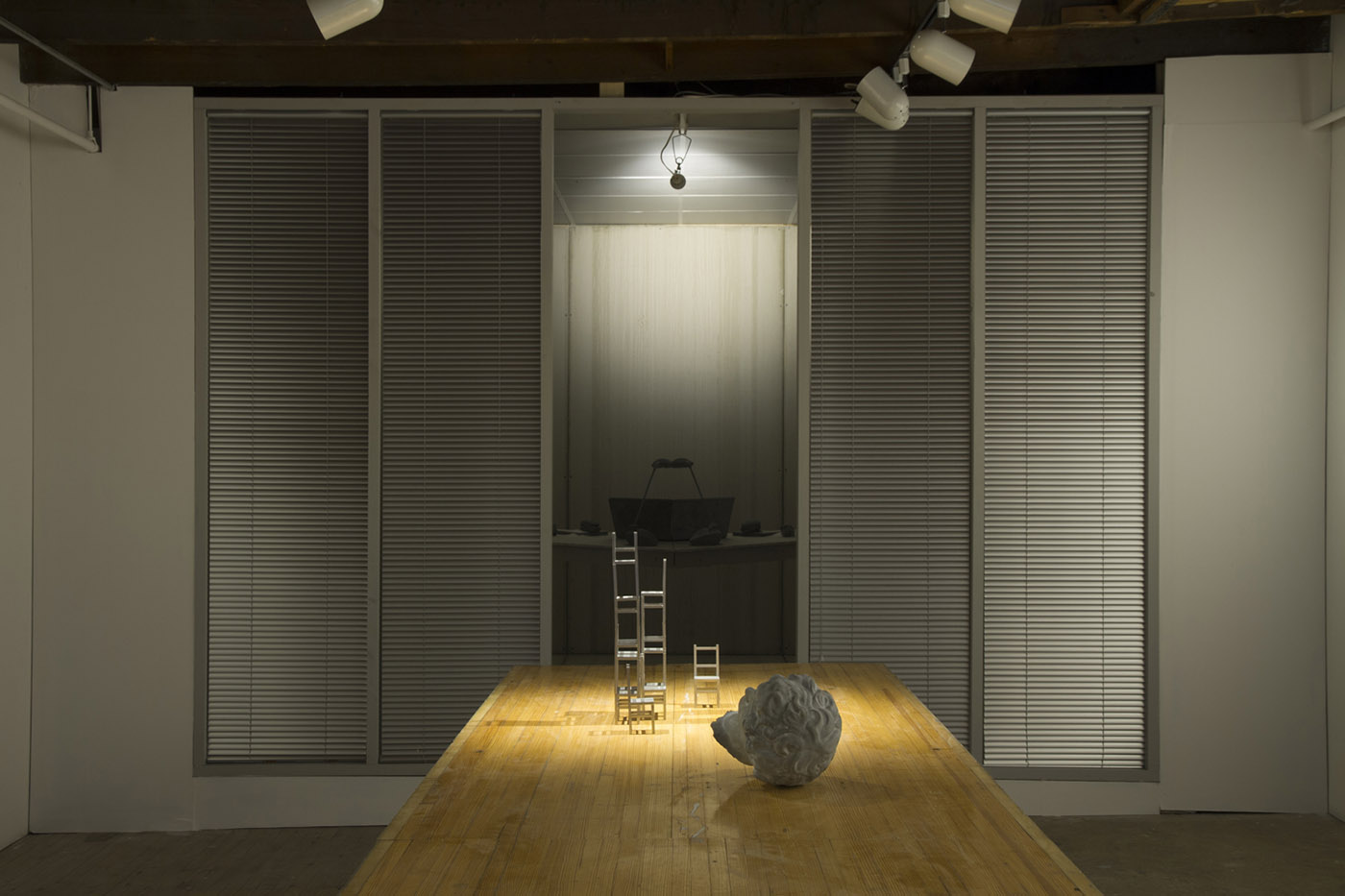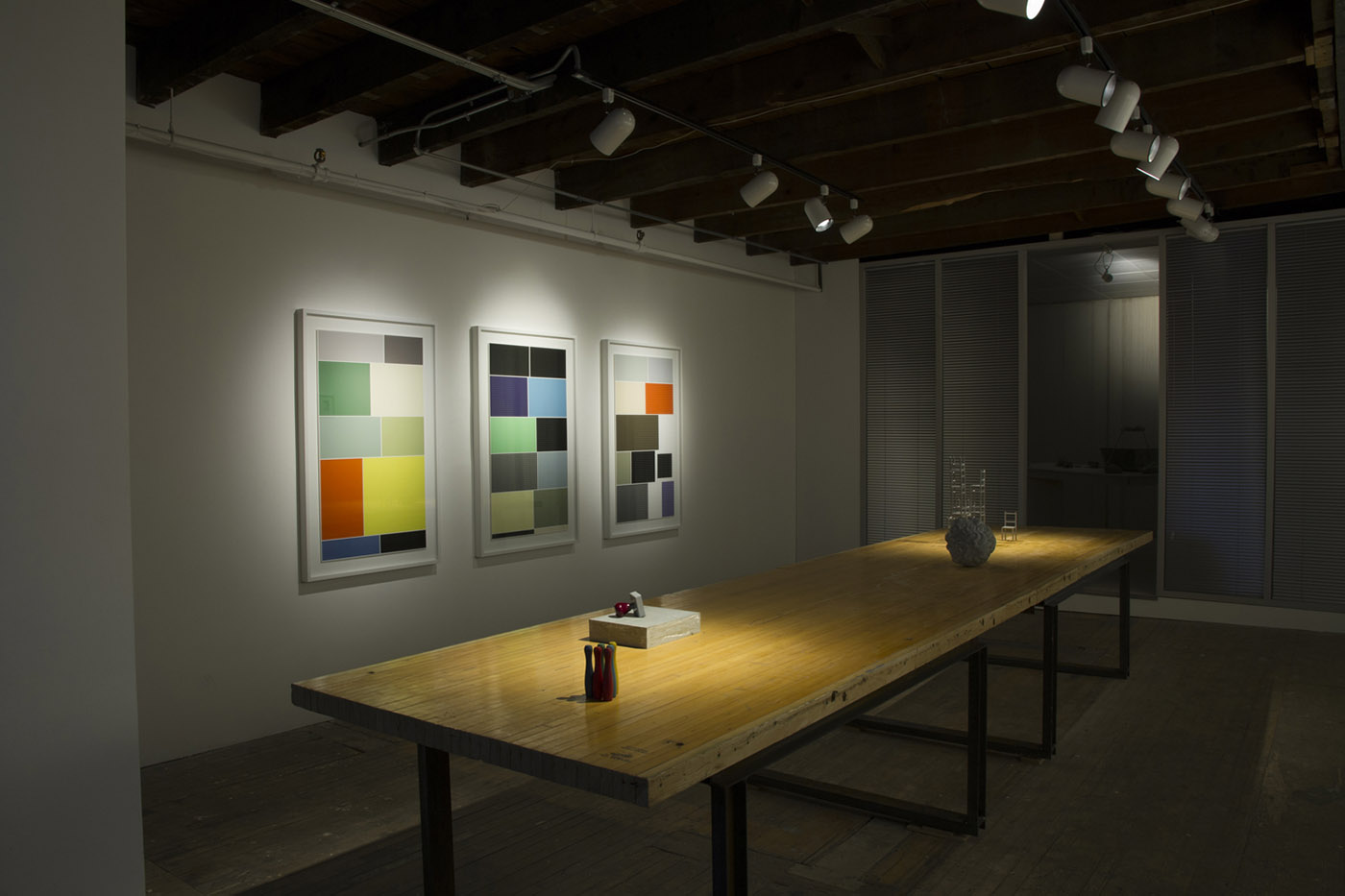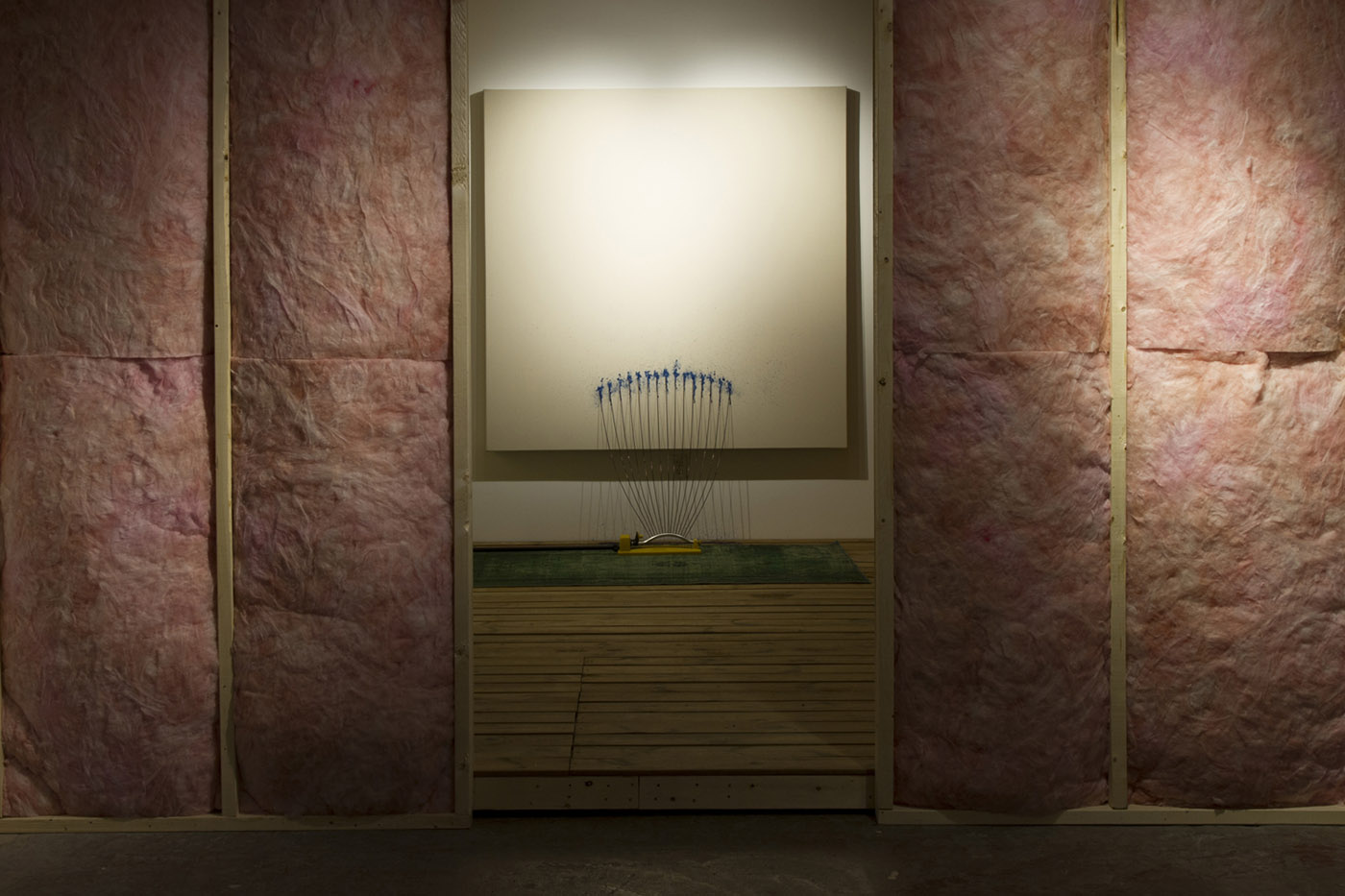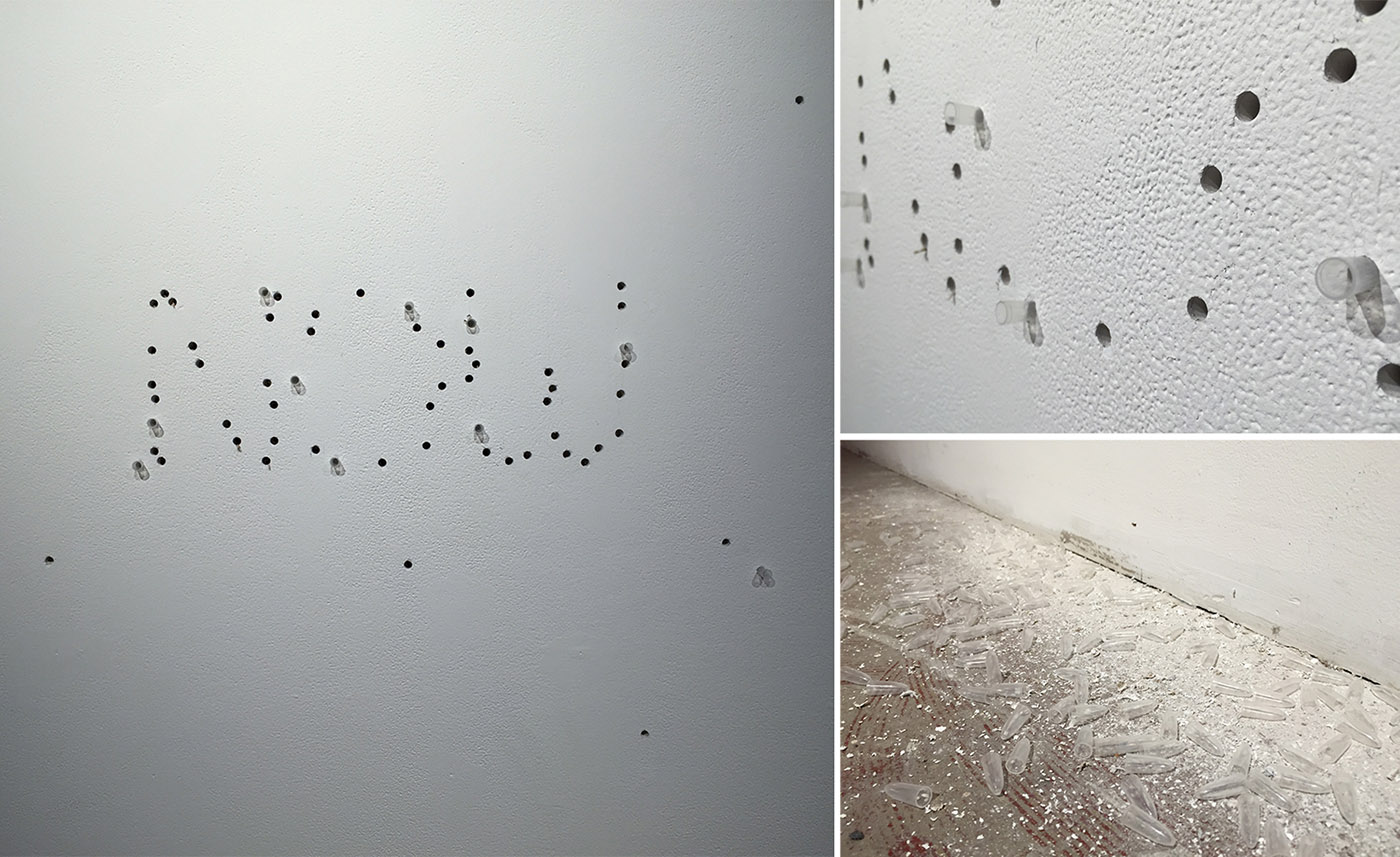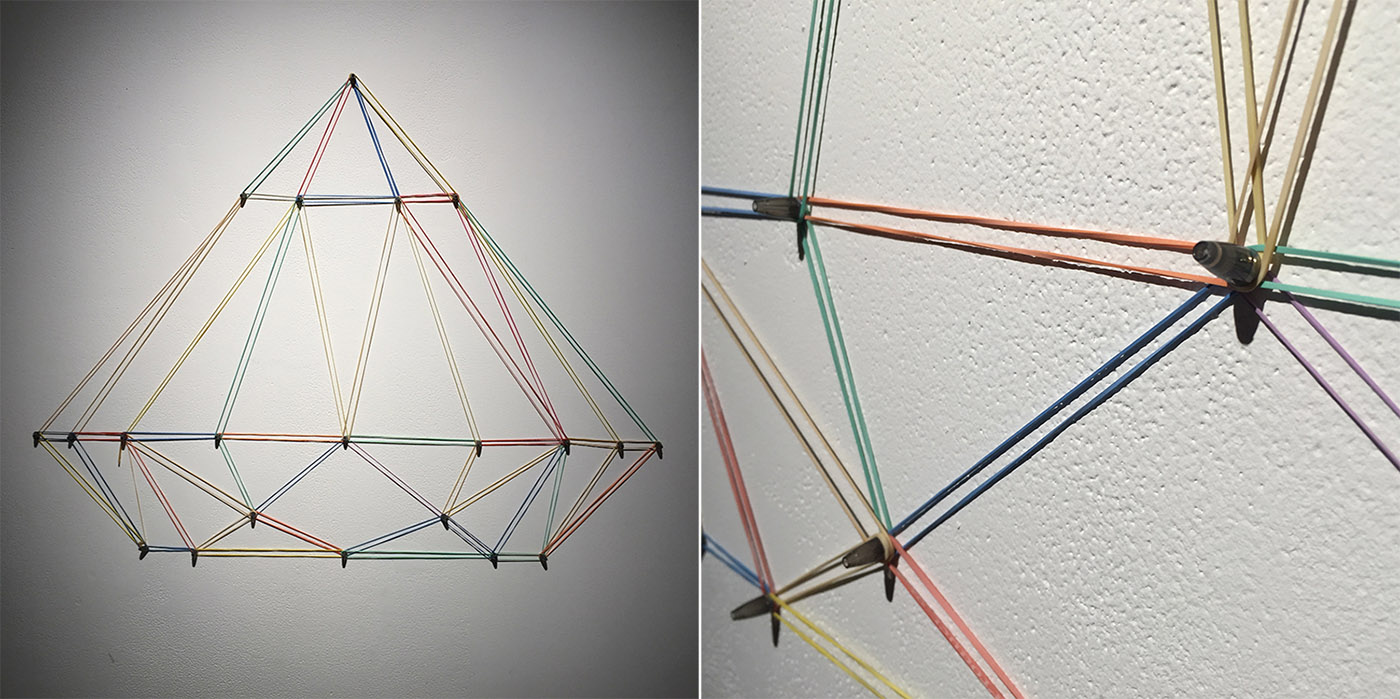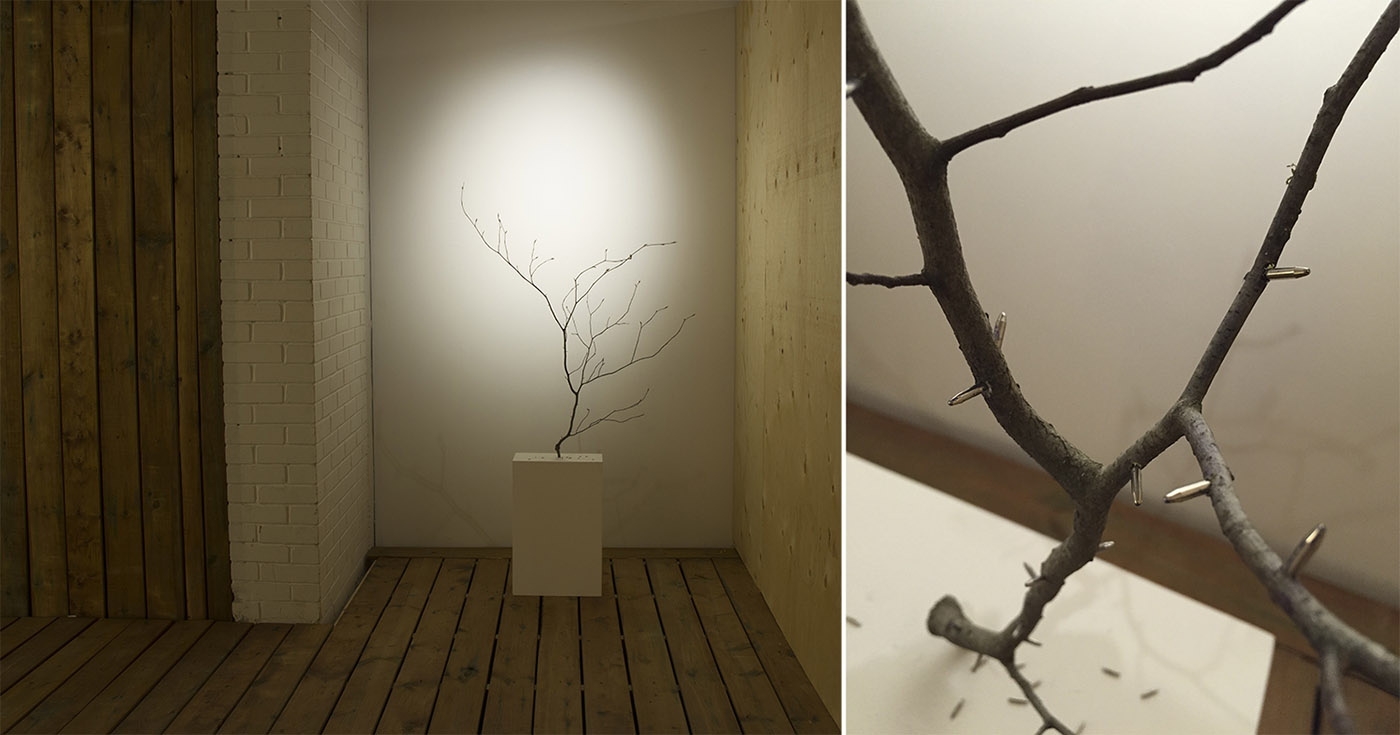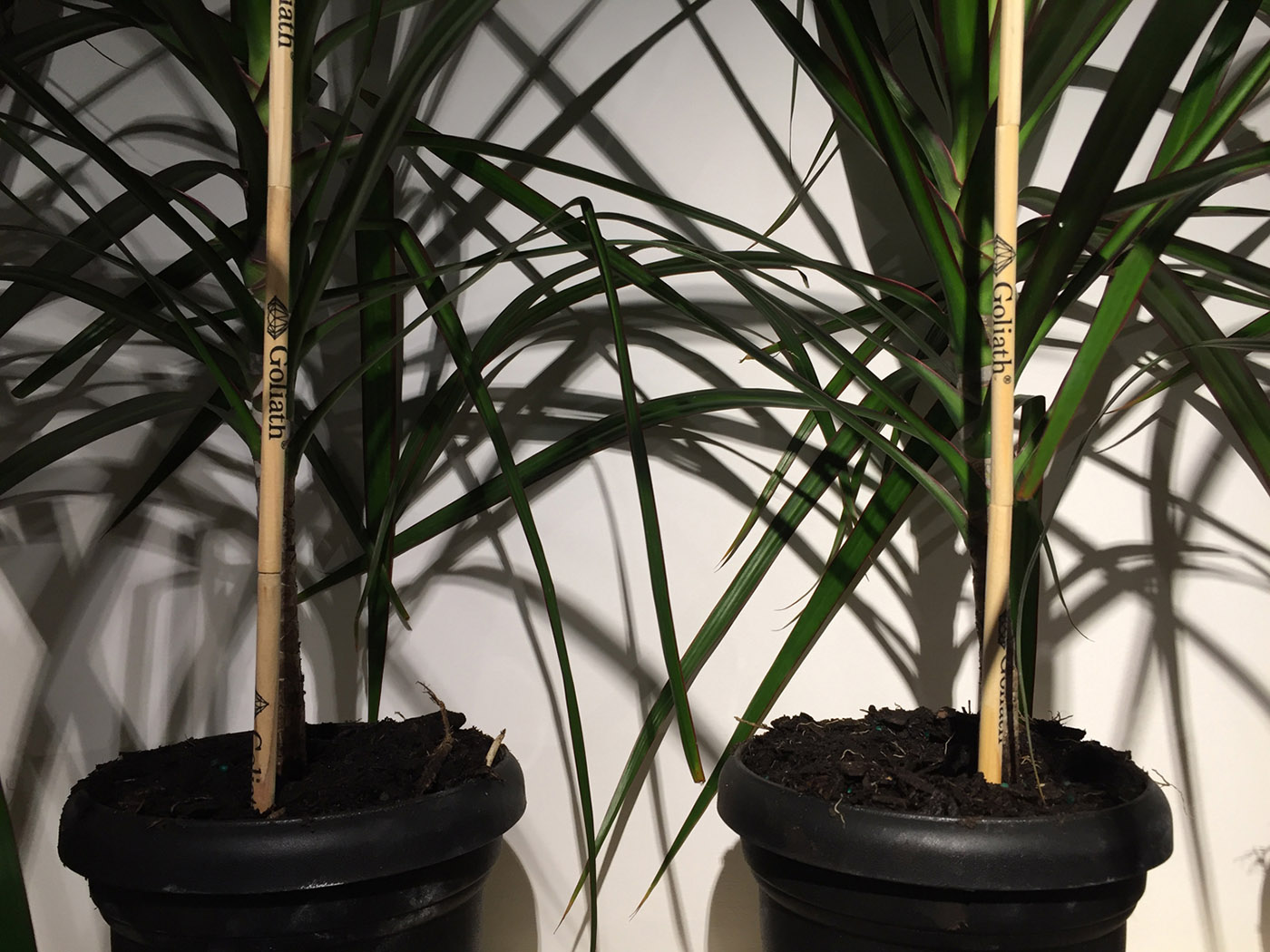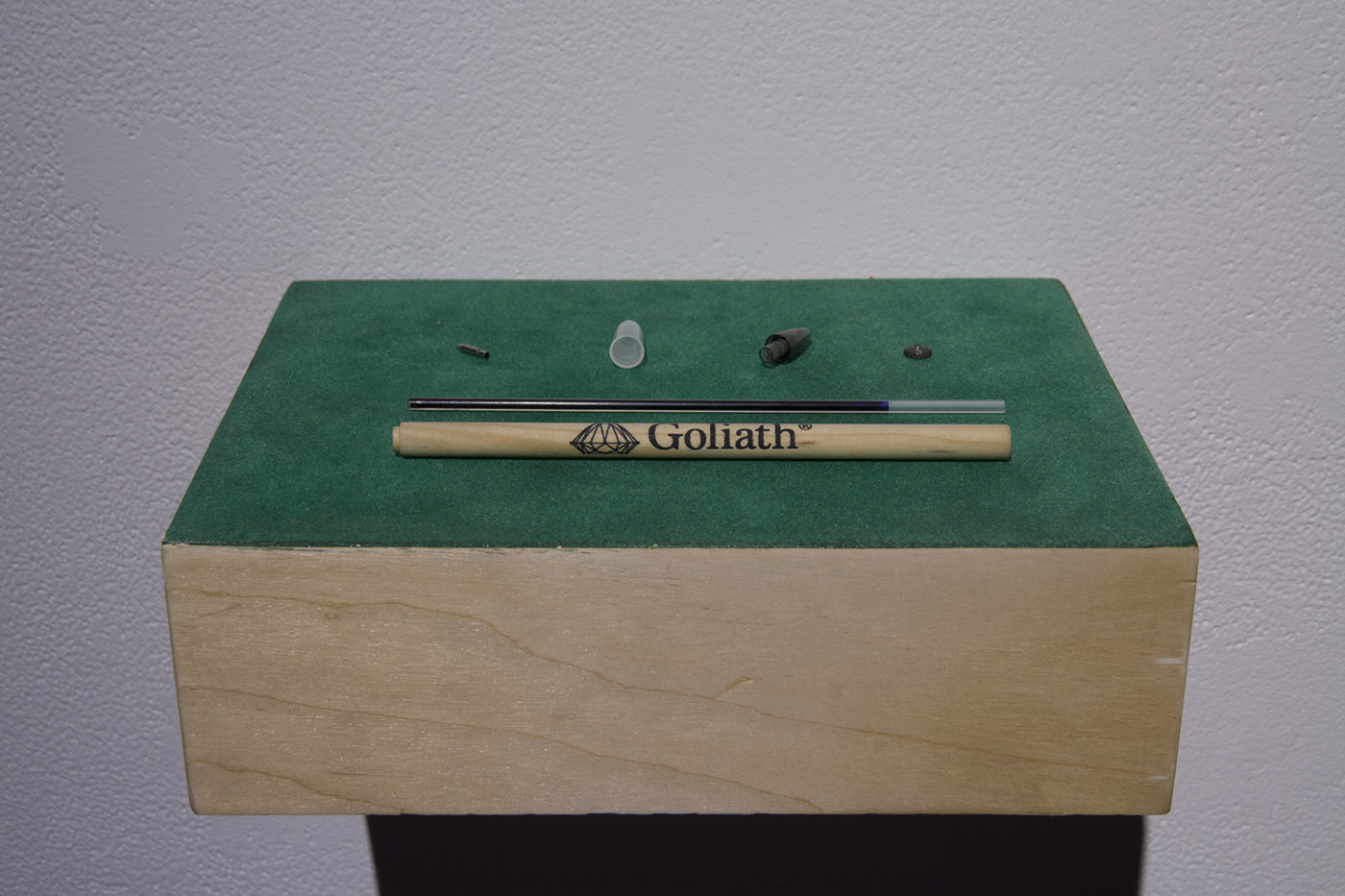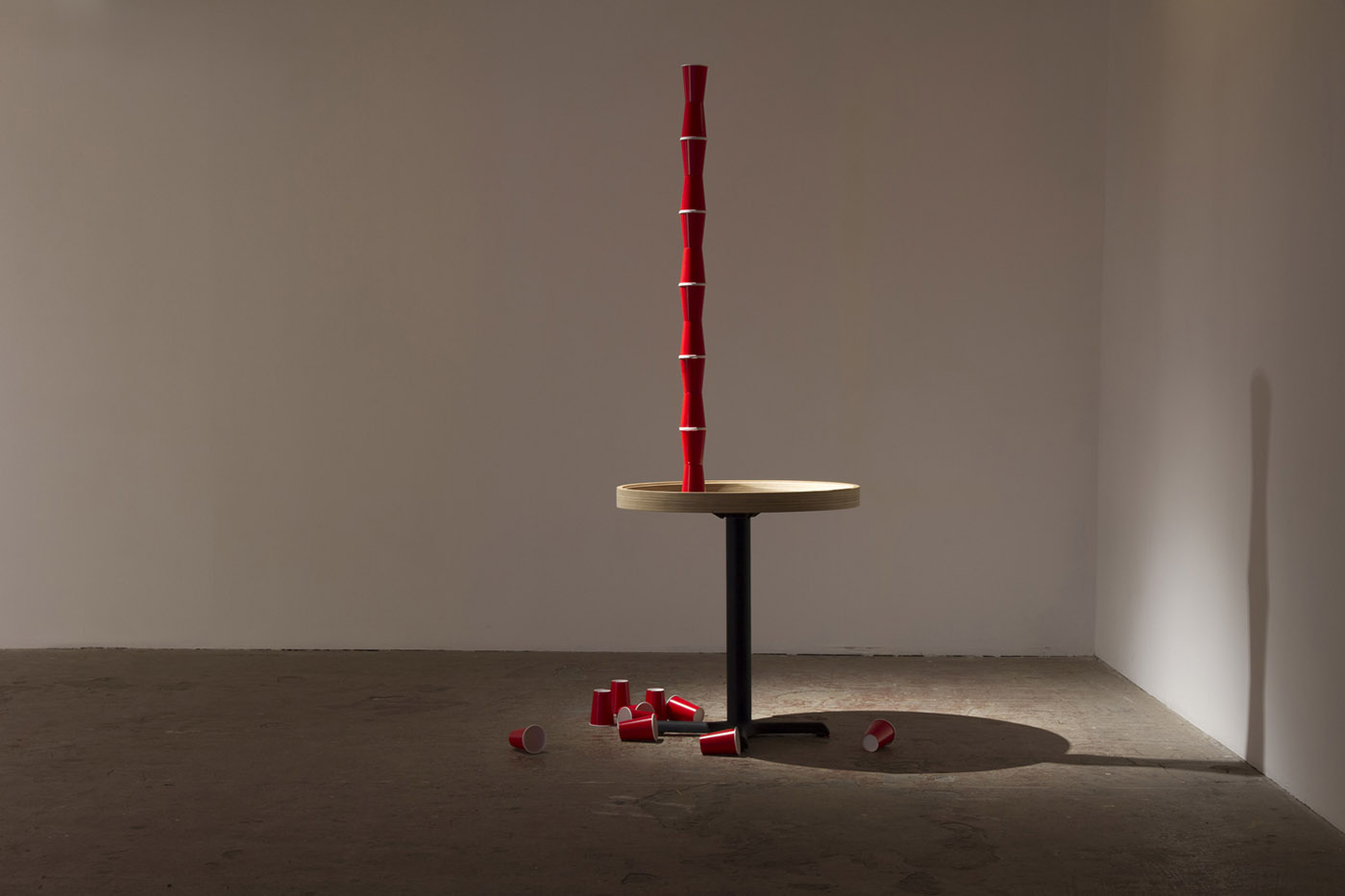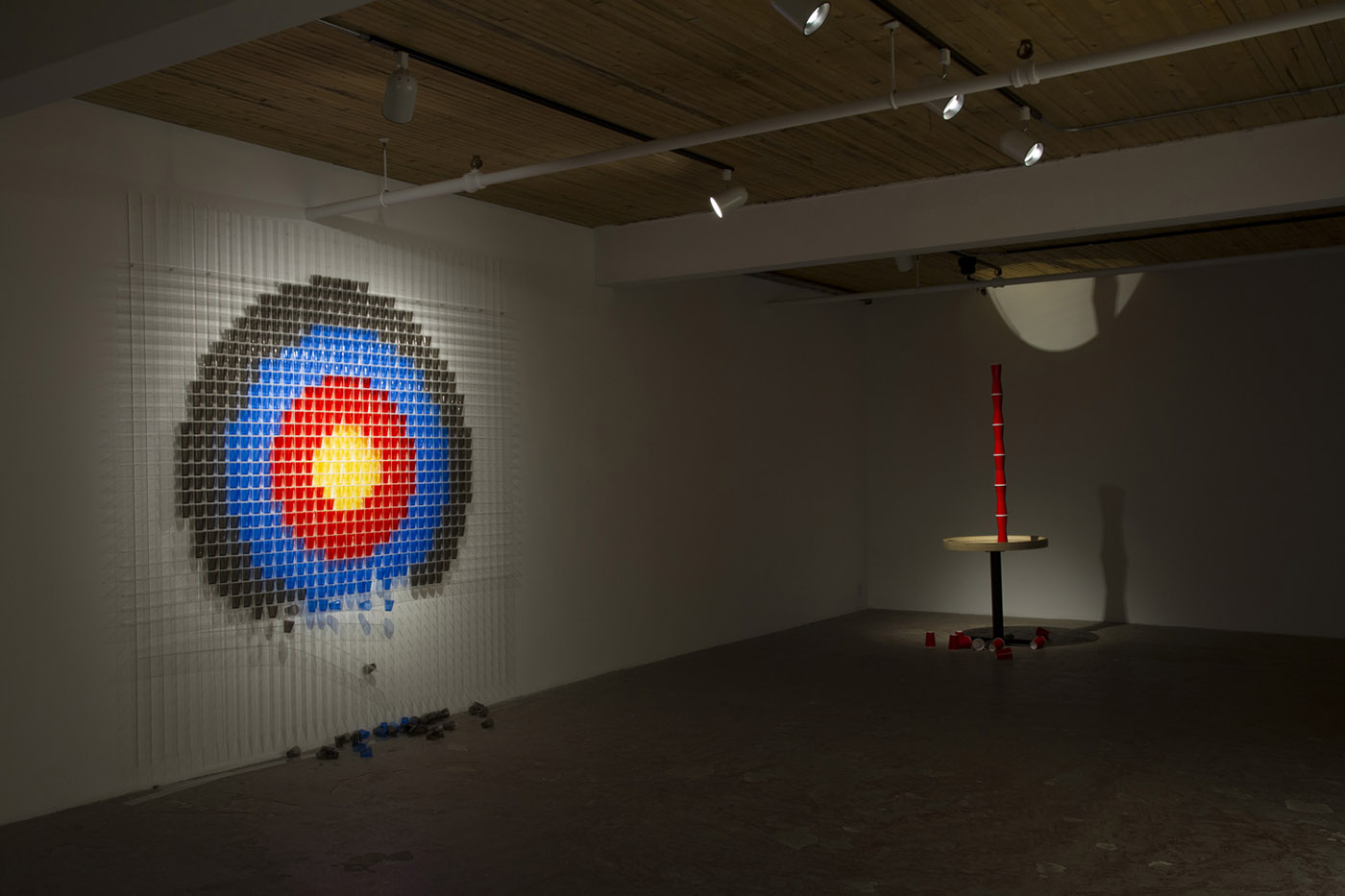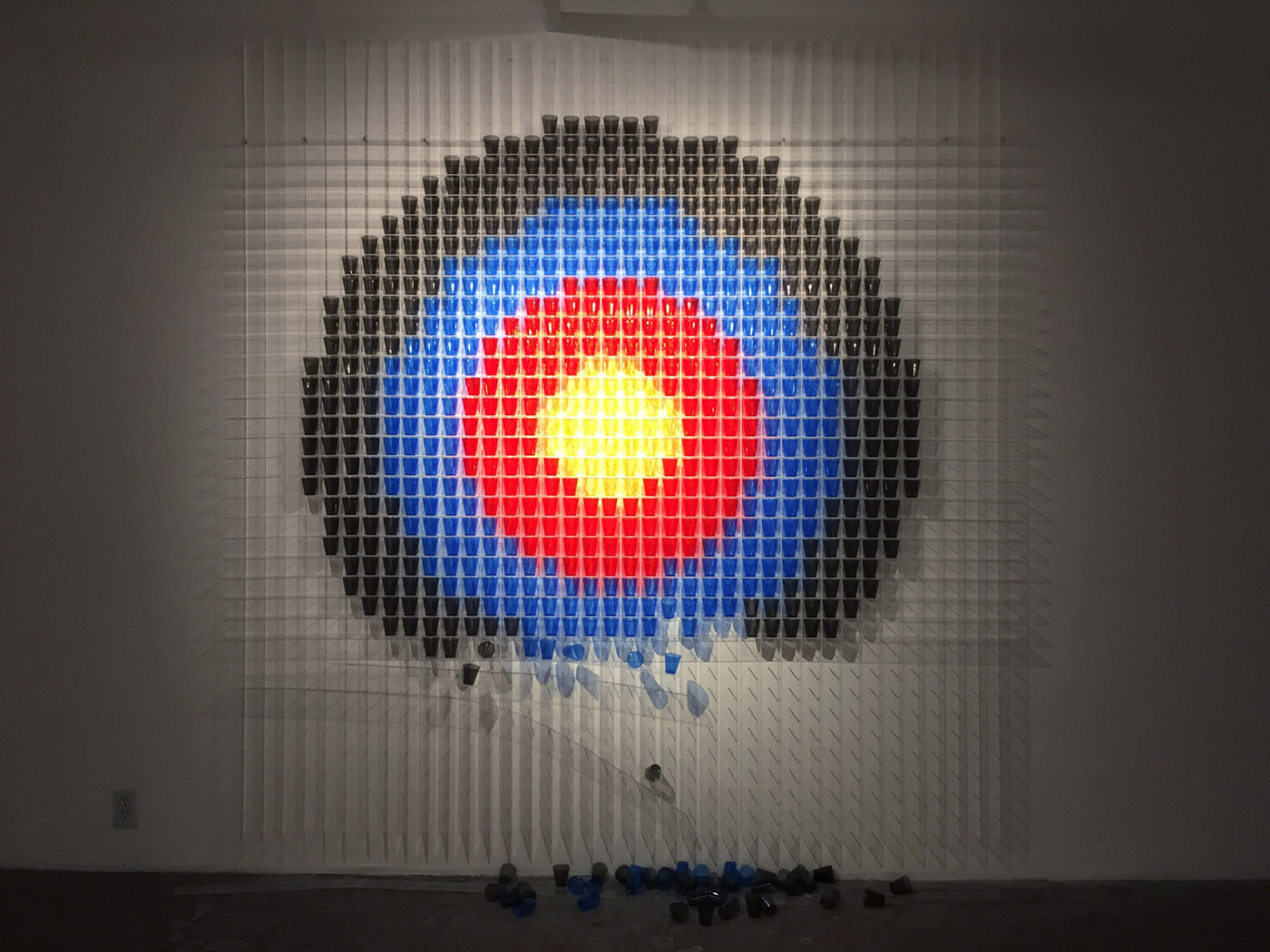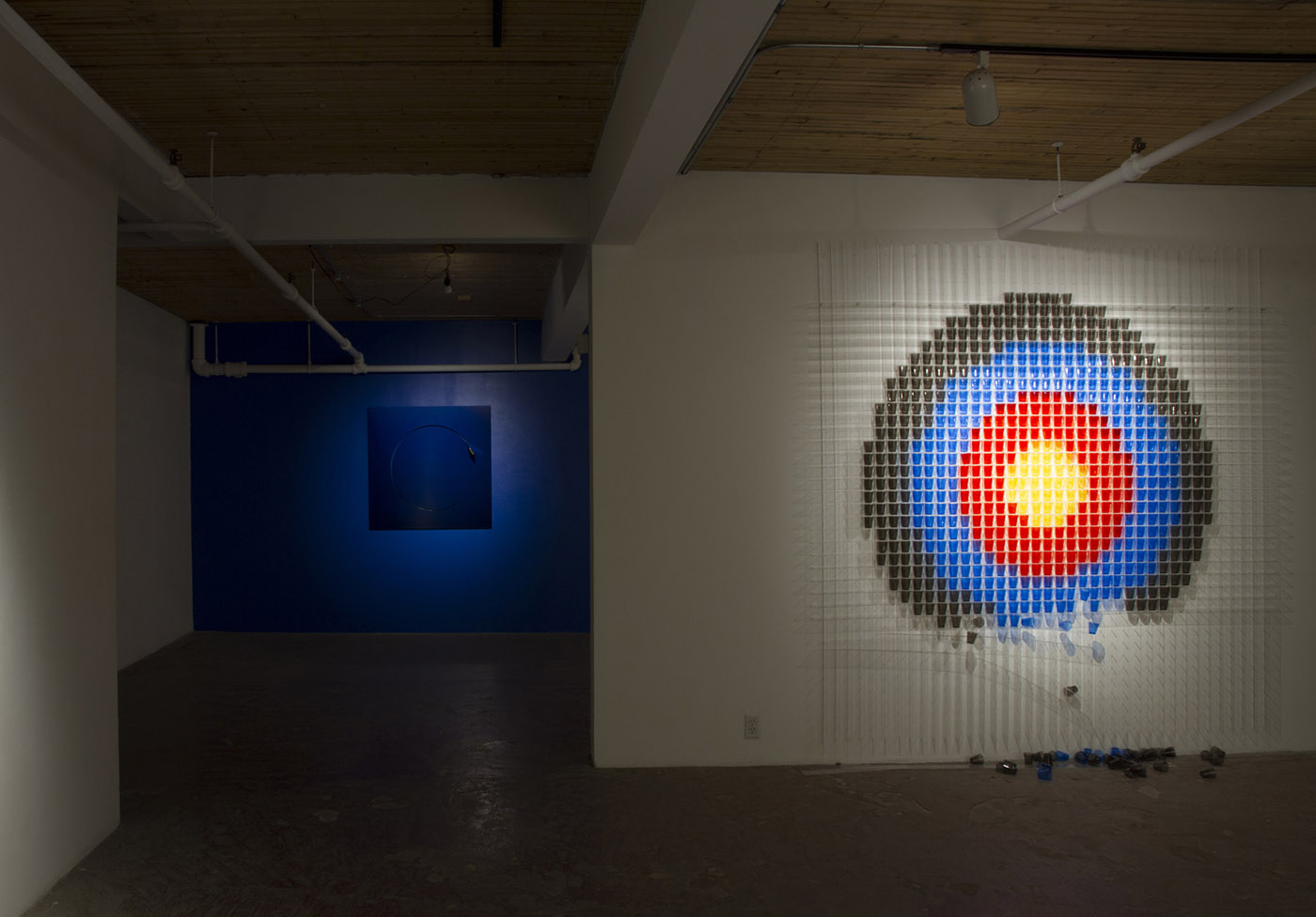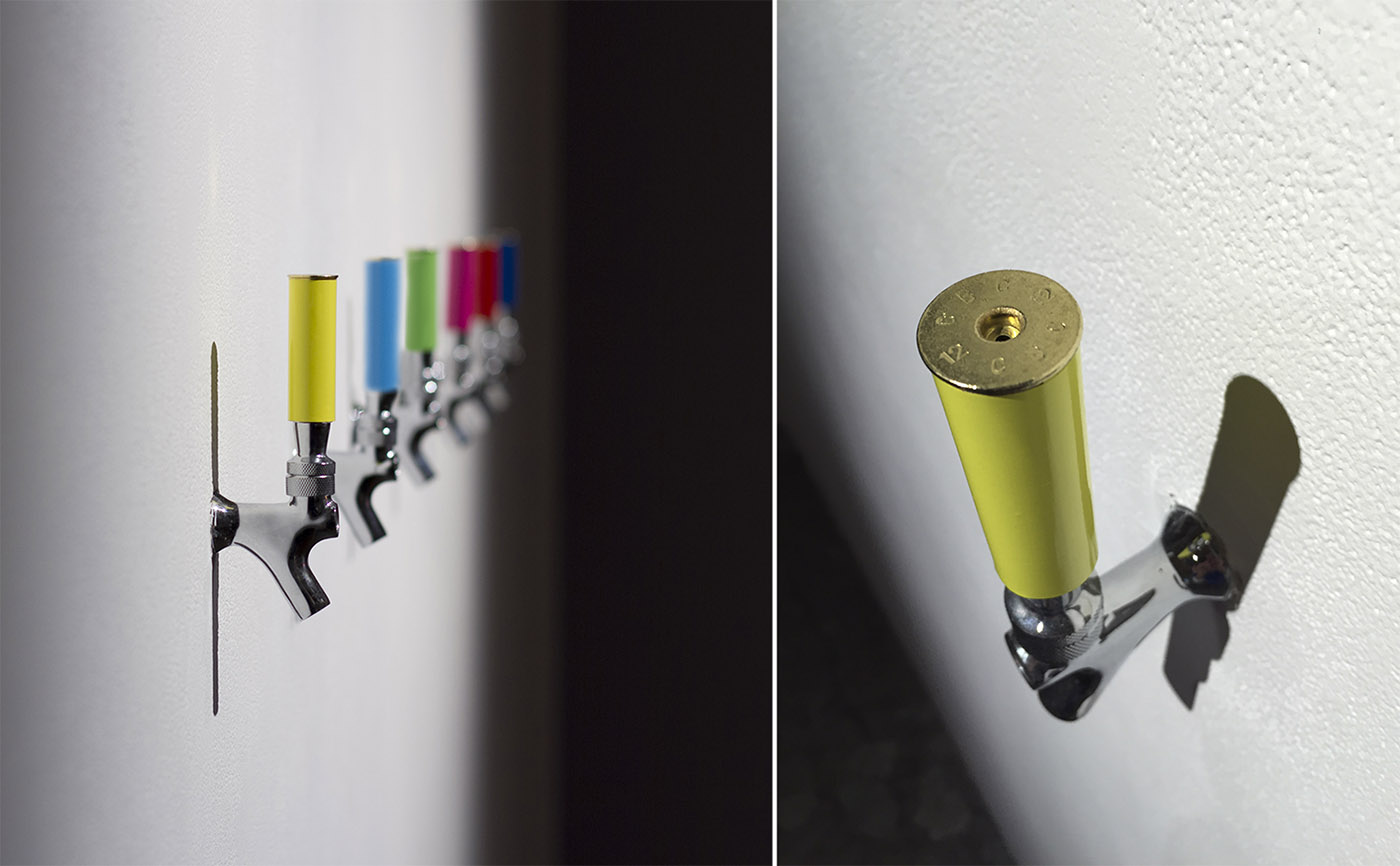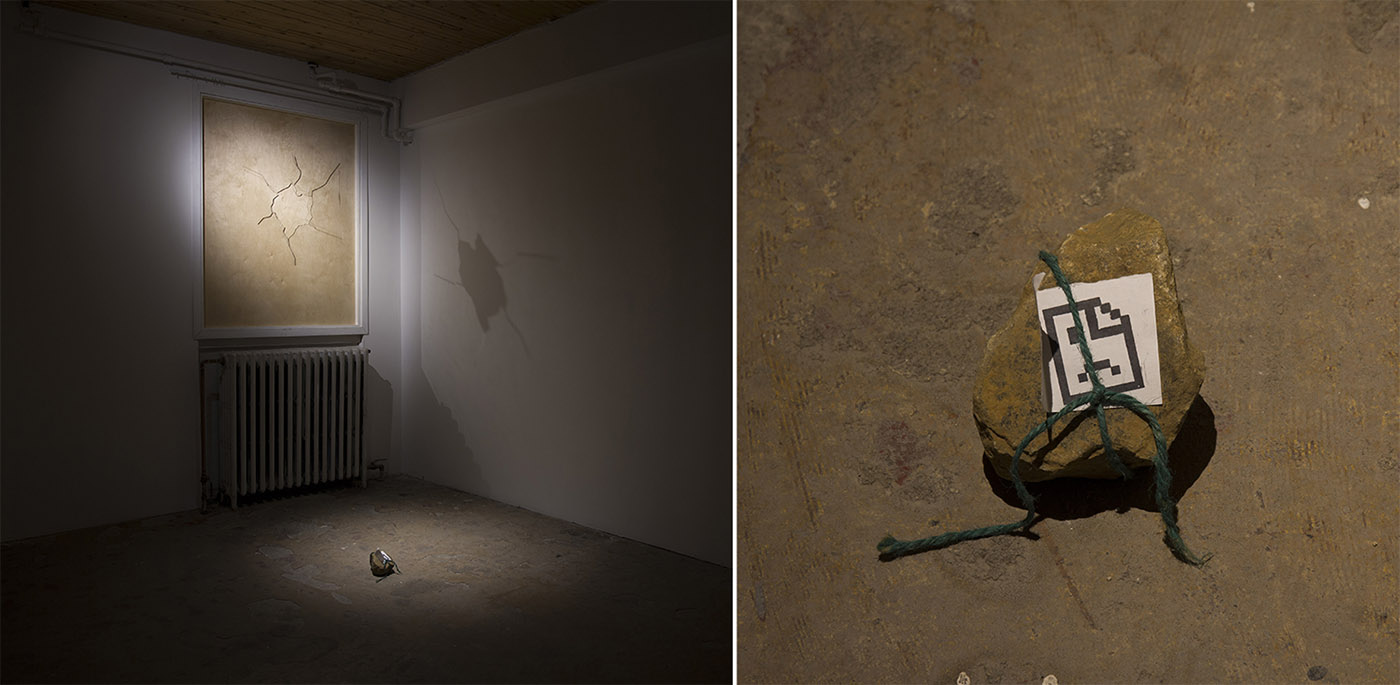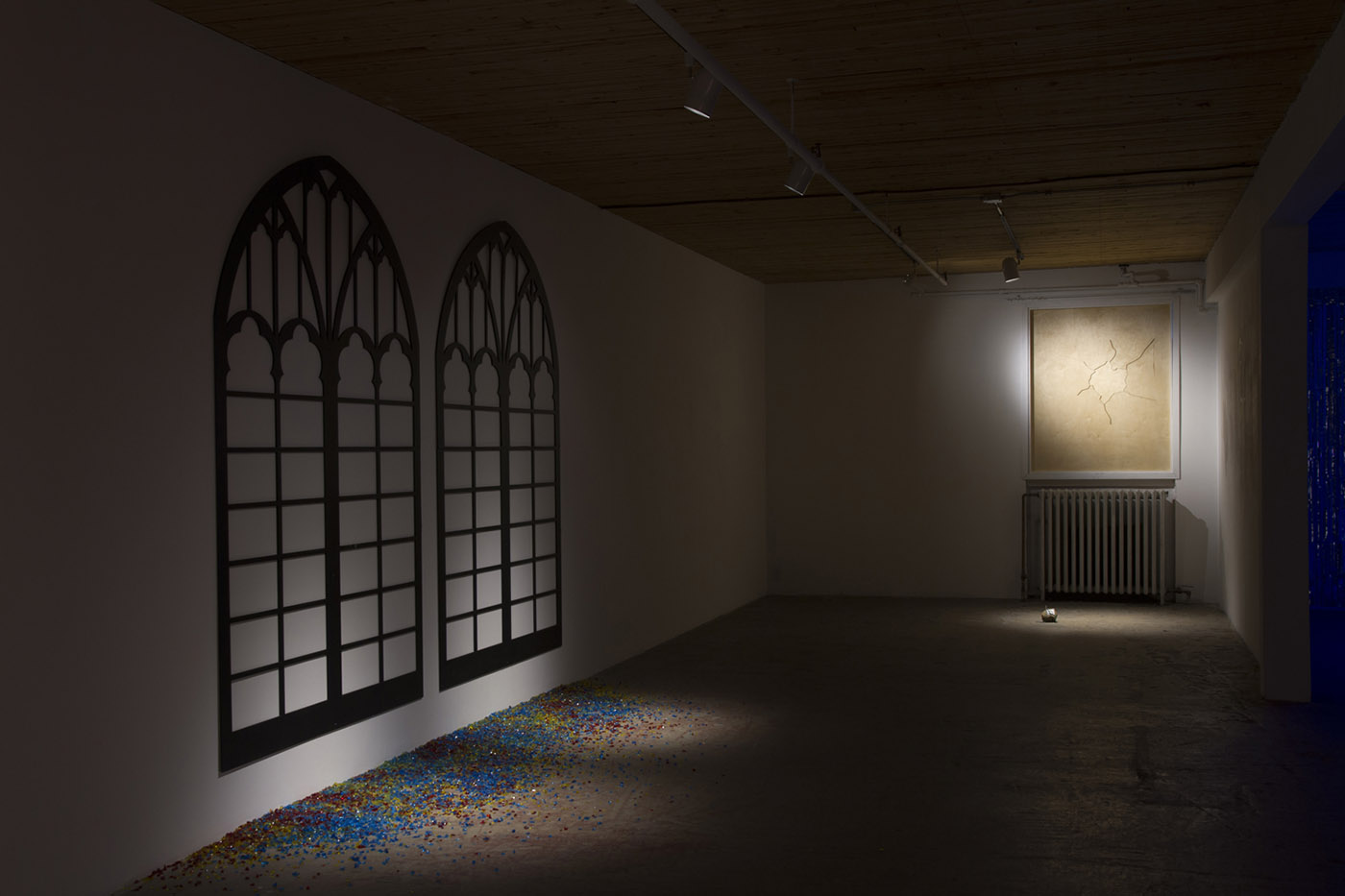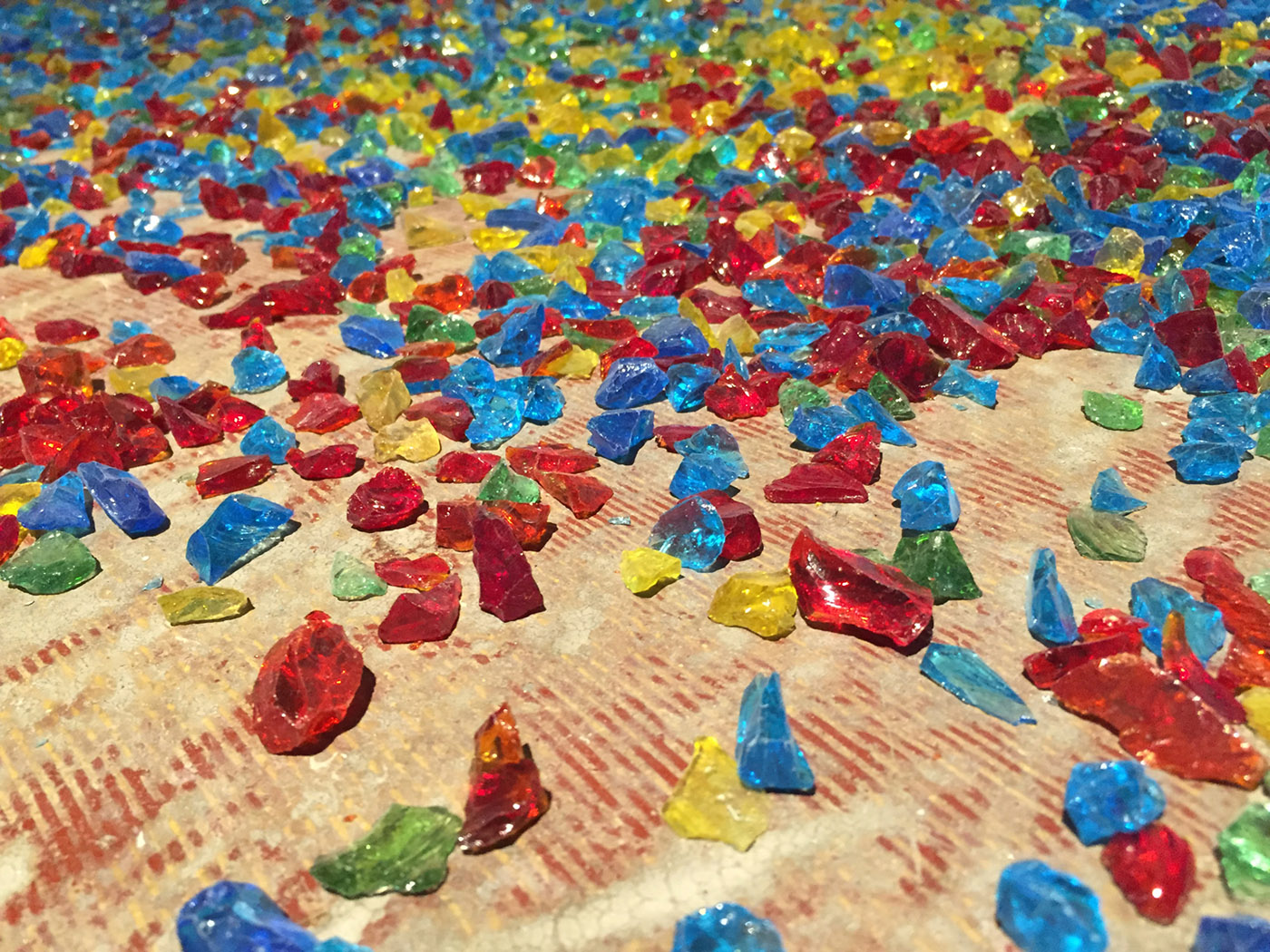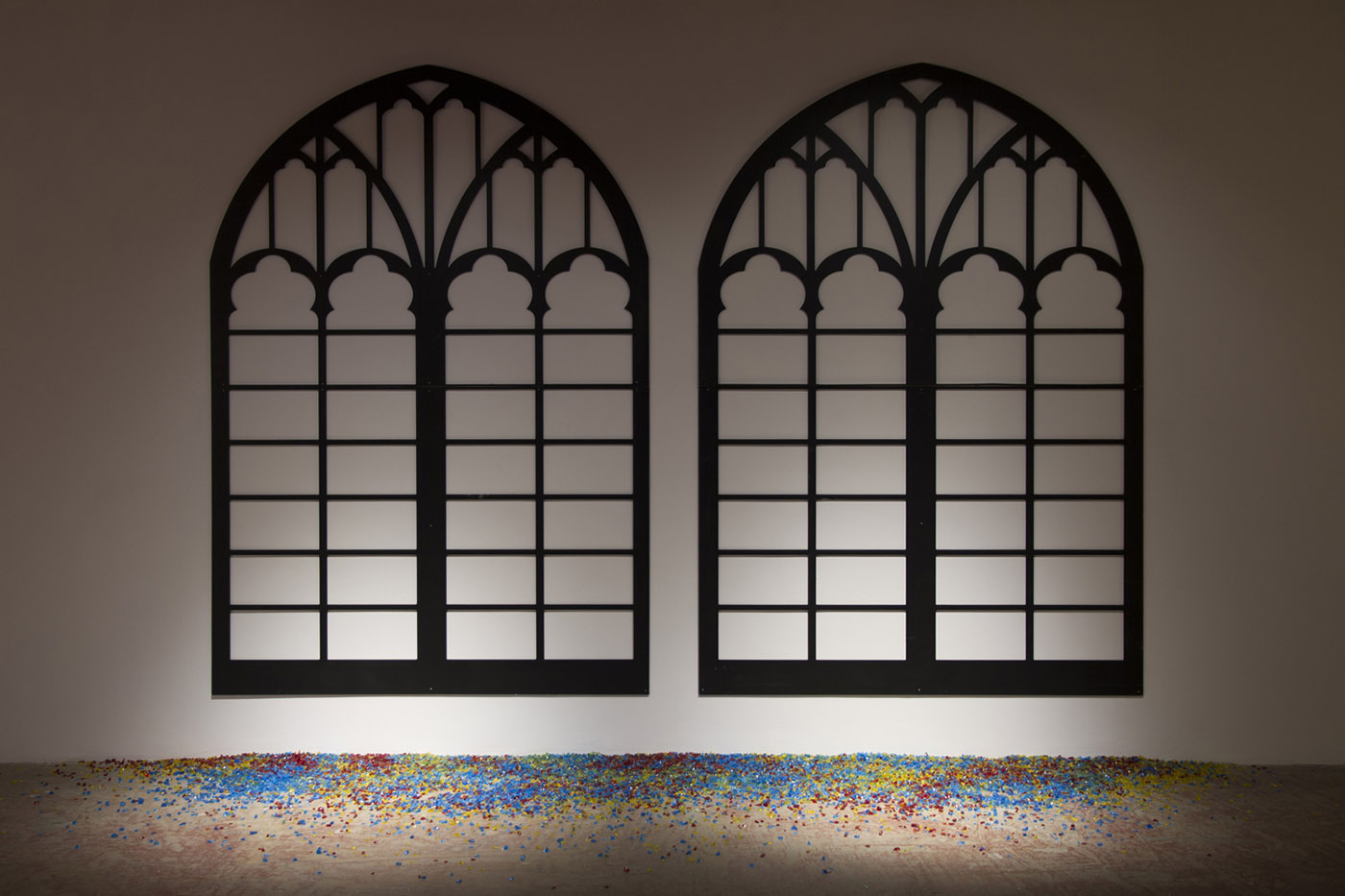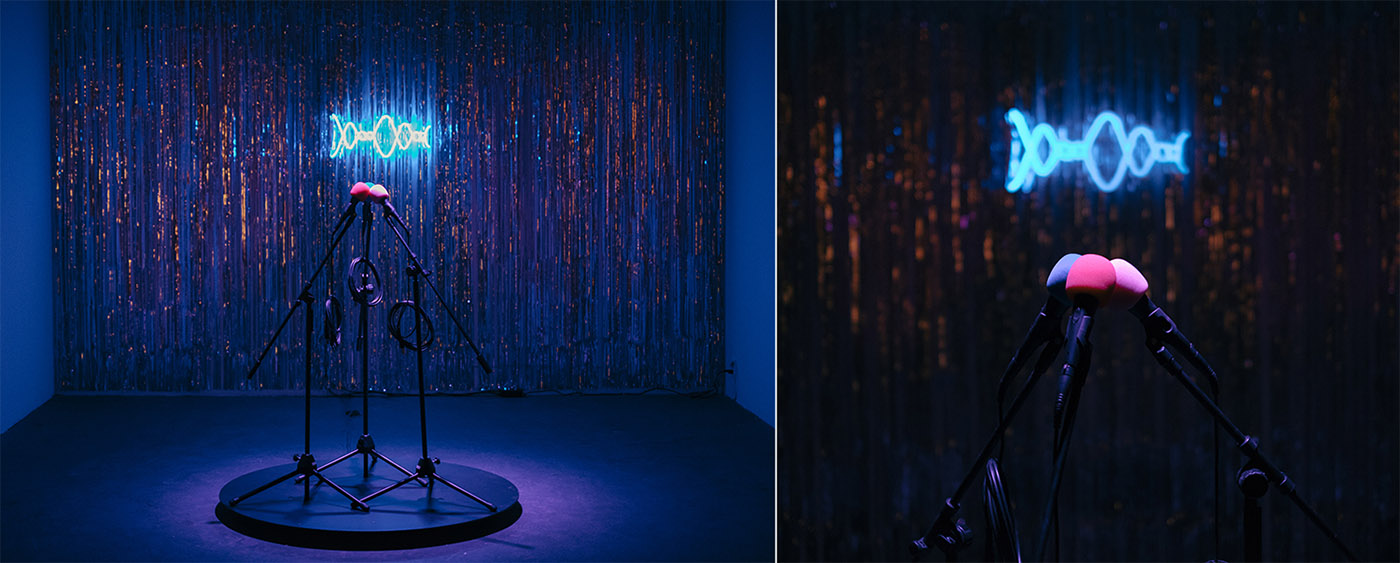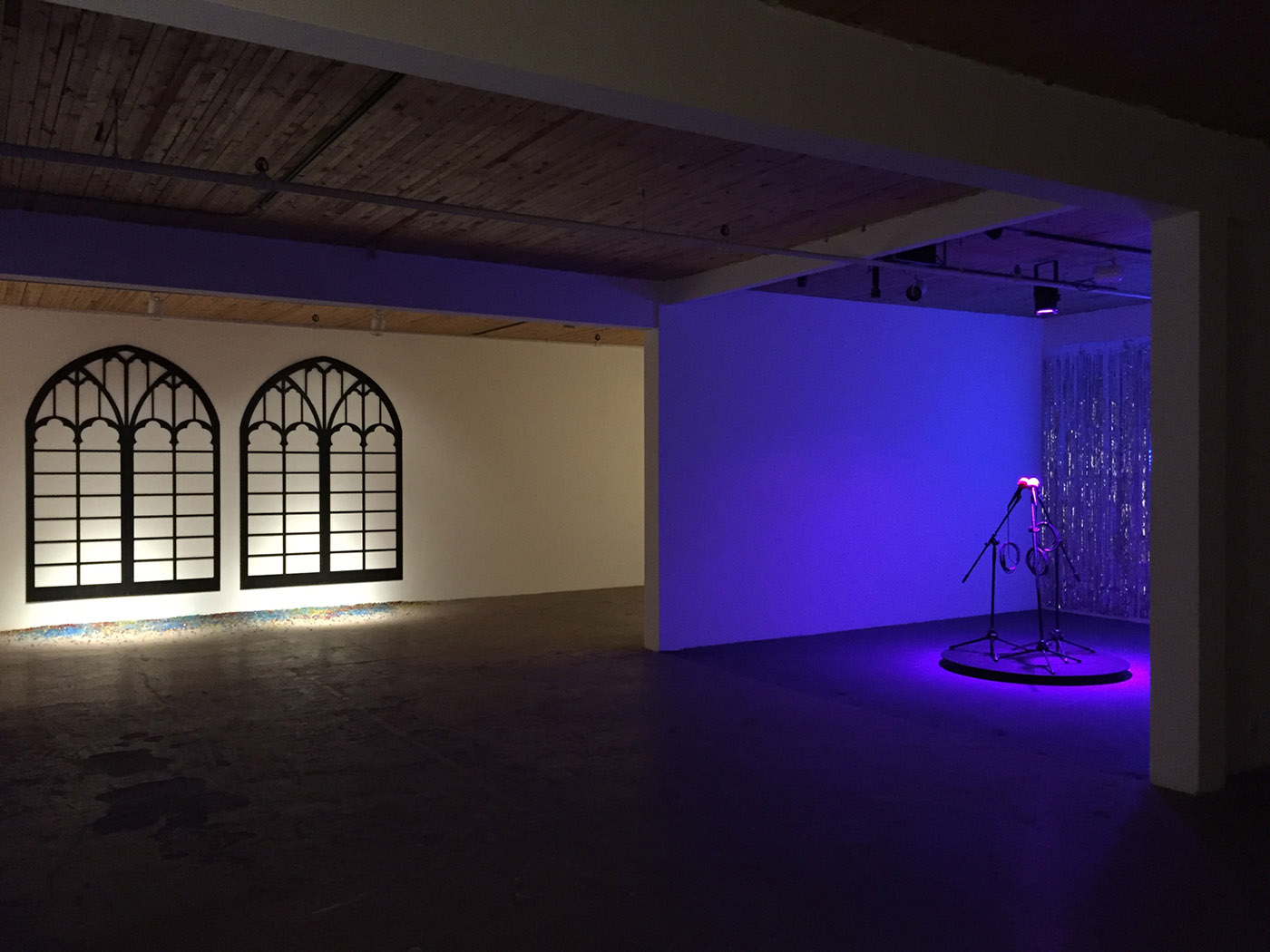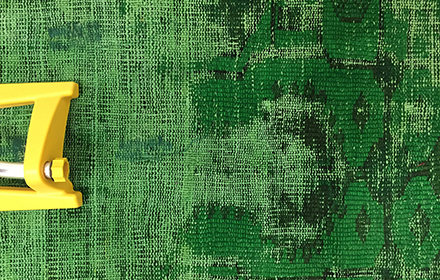Around 3:59 presented at Art Mur Gallery Montreal, Canada.
Without beginning or end, does the same circle repeat itself exactly each time? Patrick Bérubé’s exhibition Around 3:59 takes us around the inevitable and inexorable circularity of our contemporary world. A flickering neon bar sign shaped like a cloud reads “Goliath” and welcomes us to the space of the exhibition. In Bérubé’s enigmatic universe, the warrior giant that is killed by David in the Biblical story gives its name to a multinational corporation. The cloud, whose invisible vapour stores data in the digital age, seems to hover over and unite the works in the exhibition. If the cloud unifies, its perpetual presence over our heads can also symbolize bad luck: are these rooms the disquieting scenes of a nightmare or a dream?
On an empty stage, a trio of microphones face each other and are slowly rotating together in front of a kitschy silver curtain. The microphones seem to be speaking only to each other and their position prevents anyone from stepping up to the mic. Pink lighting imbues the scene with an eerie glow; the delights of light and illusion are foiled by a strange disquietude. Amid the ambiance of an abandoned bar or cabaret, rows of Plexiglas shelves are loaded with brightly hued plastic shot glasses arranged to form a target. In this work, Bérubé seems to aim at the connections and contradictions between excess, consumption and destruction. Nearby, stacked red party cups imitate the vertically expanding form of Brancusi’s Endless Column (1918), in which identical abstract shapes are repeated to express infinity. The humorous tower may also contain an intoxicating suggestion: could we ever be dried up by a thirst impossible to satisfy?
Behind the silvery curtain, a cluster of intricate traceries that could belong to stained glass windows in a gothic cathedral is positioned above a kaleidoscopic jumble of shattered coloured glass. A light shines through below the glass on the floor, creating fractured reflections, broken geometries and diverging angles. A worn-out Persian carpet replaces a patch of grass underneath a yellow lawn sprinkler. Instead of water, the cartridges of Goliath corporate pens spray dripping ink on a blank canvas in the manner of the splashes and splatters of Jackson Pollock’s drip paintings. Pieces of broken promotional pens personalized with the Goliath diamond shaped logo corrupt or hold up works in the exhibition: pen tips replace a roses’ thorns and ink stains carpets, walls and canvases.
One wall exposes a secret passage and our curiosity leads us to a private space where we find a conference table made from the floor of an old bowling alley. The dismembered head of David, who triumphs against the giant warrior Goliath, lies on the table like a bowling ball waiting to be thrown. While the history of art is filled with interpretations of the legend of David and Goliath in which the victorious David proudly holds the bloody head of the giant Goliath, here we find David slayed by the ruling multinational corporation. The walls of the conference room are lined with Bérubé’s photographic series Google images not loaded on iPhone, works formed by glitches that may recall the colour patterns of geometric abstraction or minimalist painting.
Further, we find ourselves in an imposing space where we do not belong. Have we walked into the boss’s office uninvited? There are no chairs around the table to welcome viewers to the private discussions that happen behind closed doors. Whereas the exhibition is filled with smashed glass, severed heads, decaying plants and water leaks, the dominance of those who pull the strings cannot crumble: in this room, everything is made out of cold polished concrete. While a butterfly remains stuck in a lantern from which there is no exit, perhaps, if we could piece the pens back together, we could draw ourselves out of the circle.
Text : Isabelle Lynch
